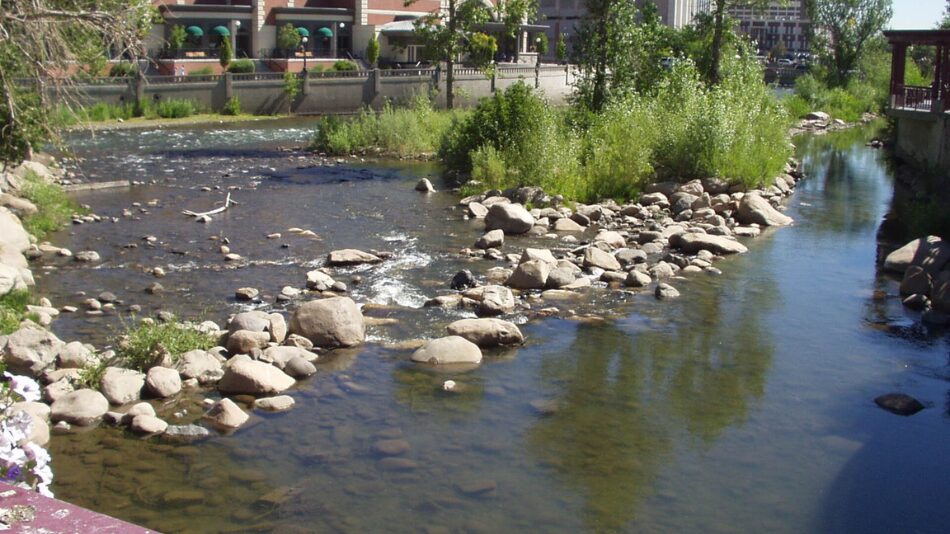
Standing on a footbridge at Wingfield Park in Reno, Nevada, gazing downstream. The first single closed-end (SCE) AquaDam® will be installed to the left of this photo, near the white capping water.
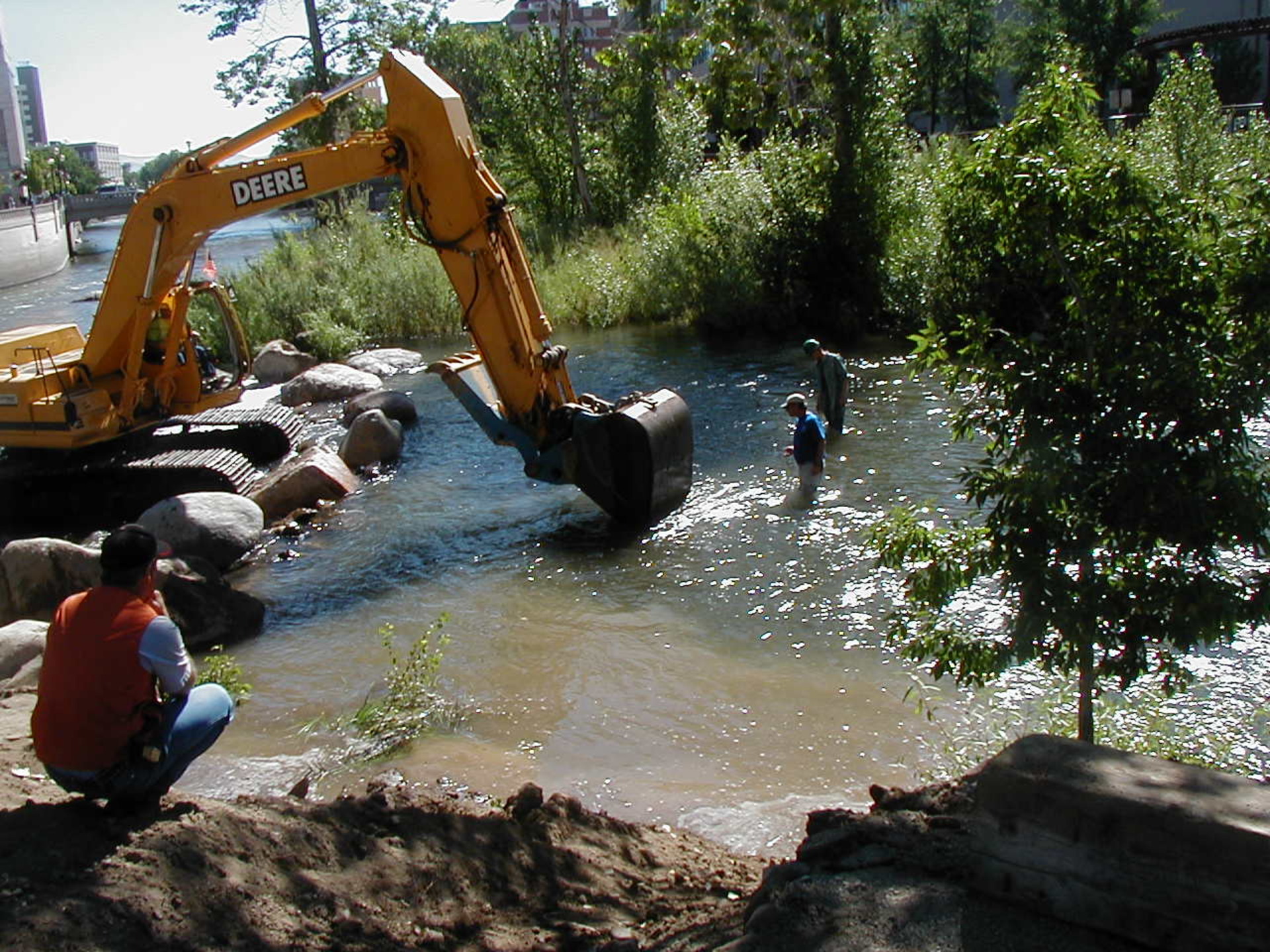
Before the first SCE AquaDam® could be installed, workers had to clear the path of rocks, boulders, and other debris that could lead to seepage or damage.
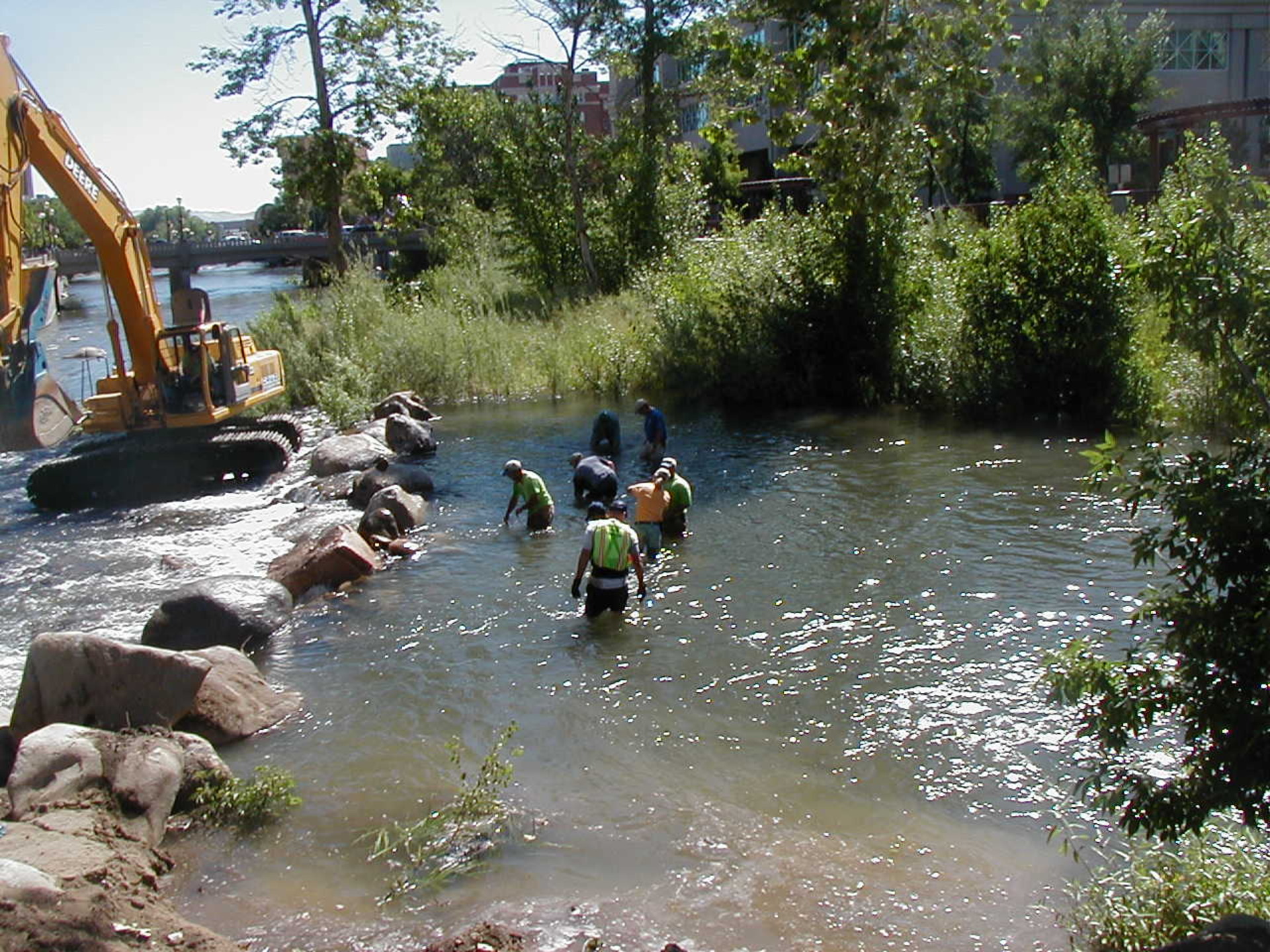
Once the heavy items were moved, the workers searched for rocks that needed to be picked. Rock picking is crucial for creating a tight seal between the AquaDam® and the riverbed. The boulders were strategically placed downstream to provide support for the AquaDam.
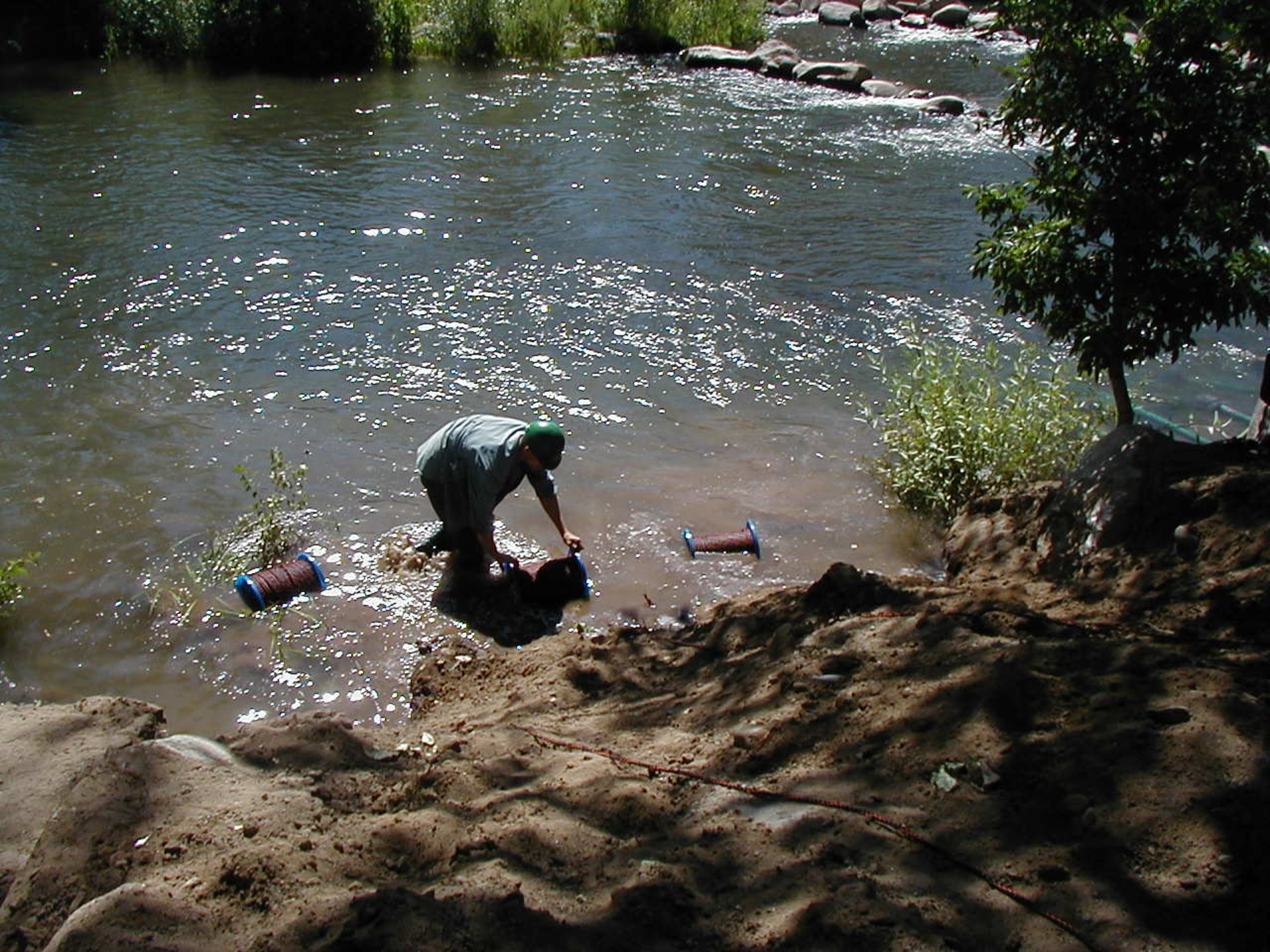
Workers are running multiple ropes under and over the AquaDam. These ropes are anchored on shore, run under the AquaDam, over the top of the roll, and back to workers who control the roll while the dam is being filled with water. The ropes are essential for holding back the roll as the unrolled length fills and rises above the surrounding water.
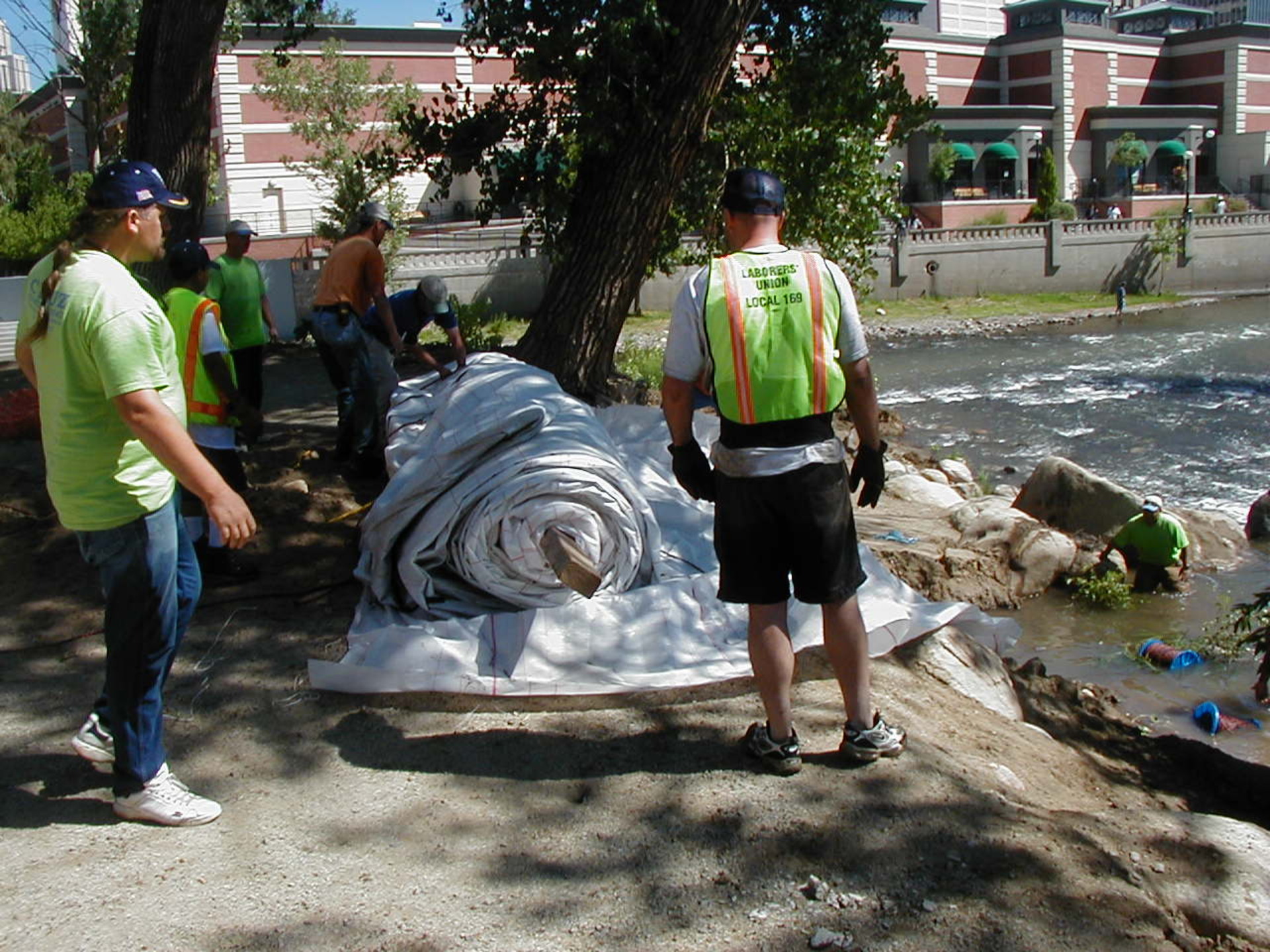
The first SCE AquaDam® has been place on its starting bank so that it will unroll in the correct direction. To ensure proper installation and functionality of a SCE AquaDam, it is essential to have a starting bank that maintains a higher elevation than the body of the AquaDam. The open end and fill-tubes of the SCE AquaDam® must remain elevated above the full height of the dam along its designated path. It is important to note that an AquaDam® will only reach its maximum height at the lowest elevation point along its designated path.

The AquaDam® has been launched from its starting bank. Workers are pulling the fill-tubes back up the bank so they can place discharge hoses into them for filling the AquaDam.
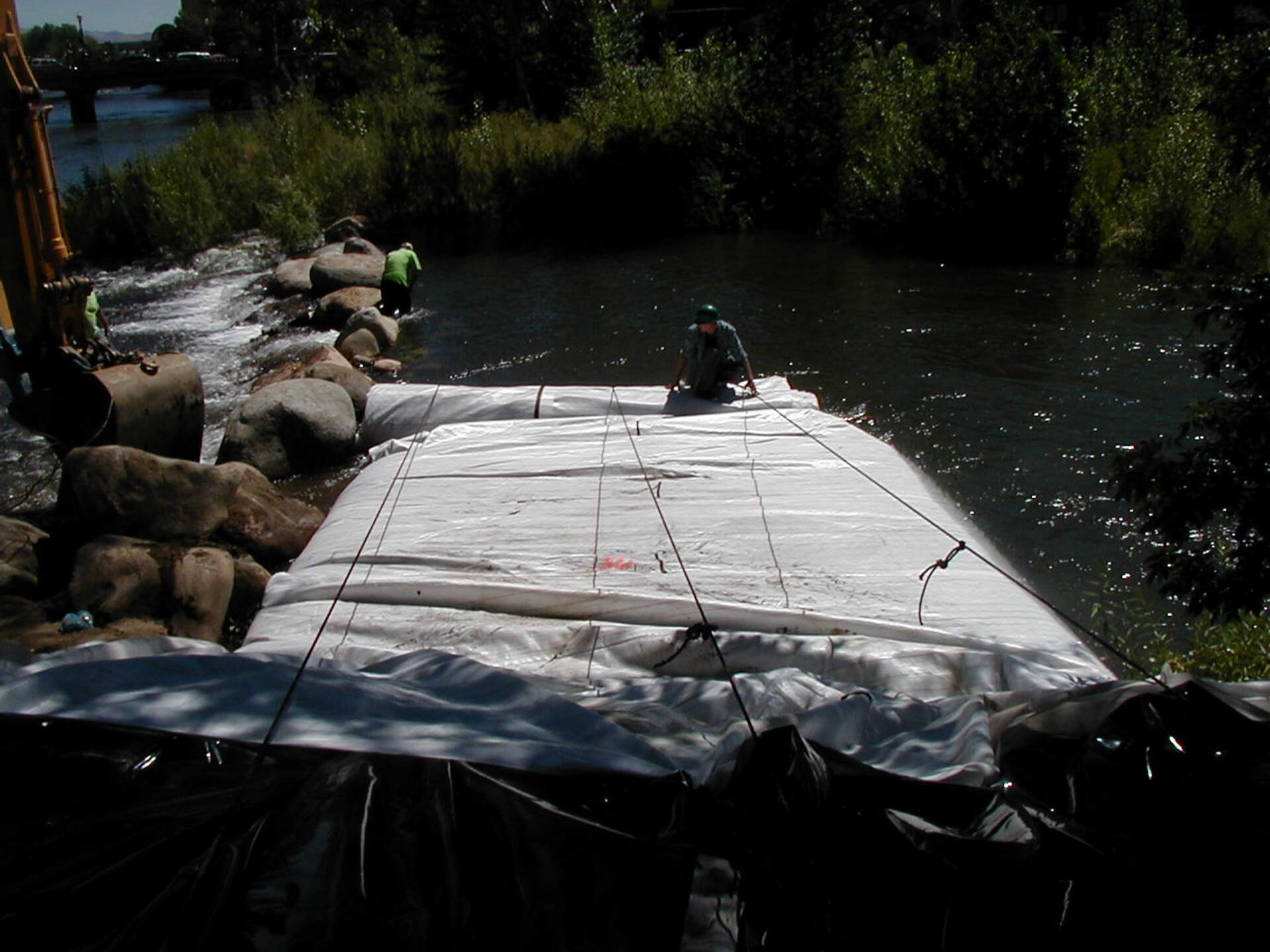
After the unrolled length has a few inches of head above the surrounding water, workers release a few feet of rope unrolling a few feet of length, then hold the ropes tight again and repeat the process until the dam reaches its ending bank. In flowing water it is important to maintain head in the body of the AquaDam® at all times. The upstream water will rise in depth as the flow is closed off.
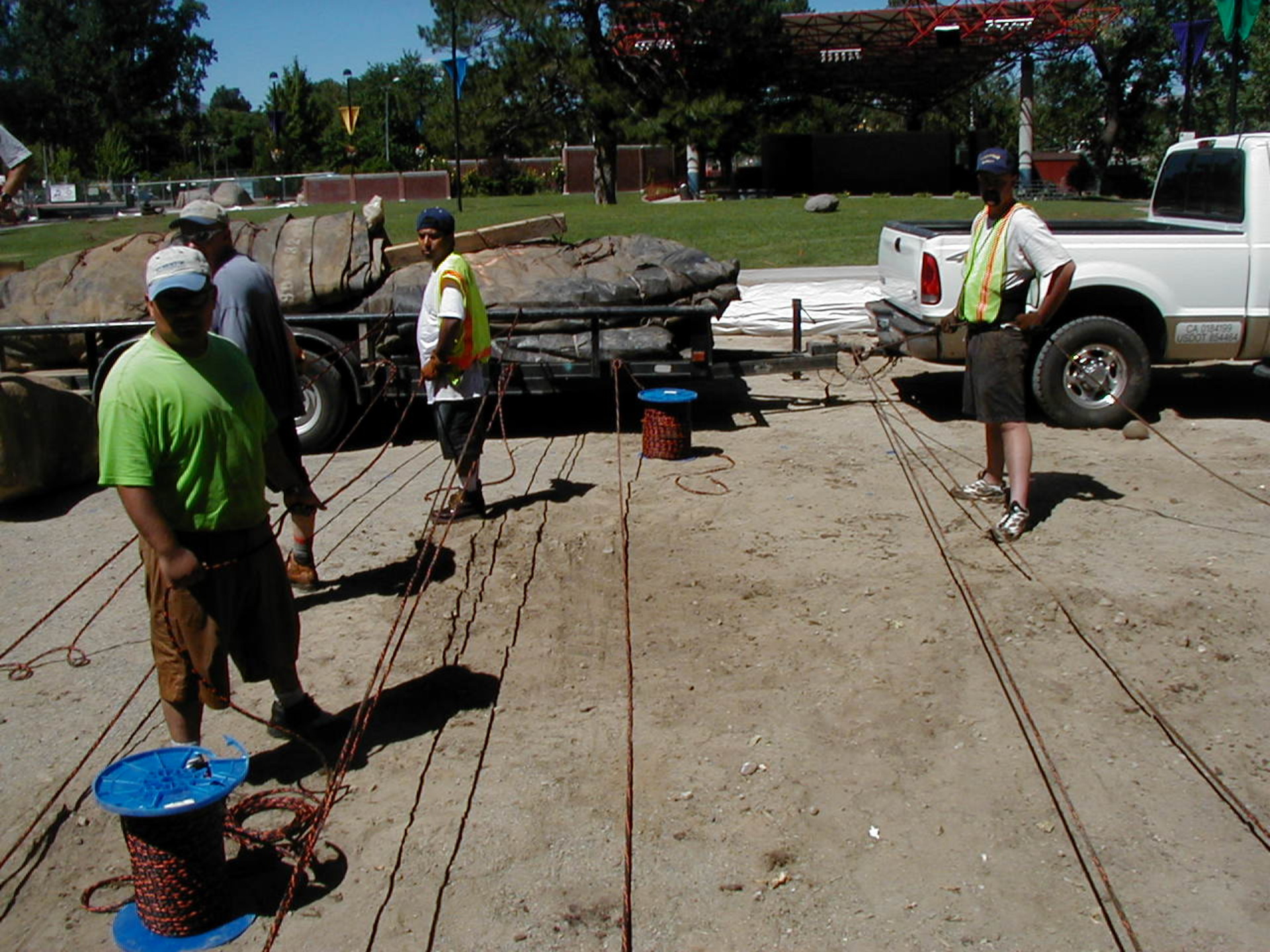
Here we can see the workers that were holding the ropes and the anchor that they used to control the AquaDam.
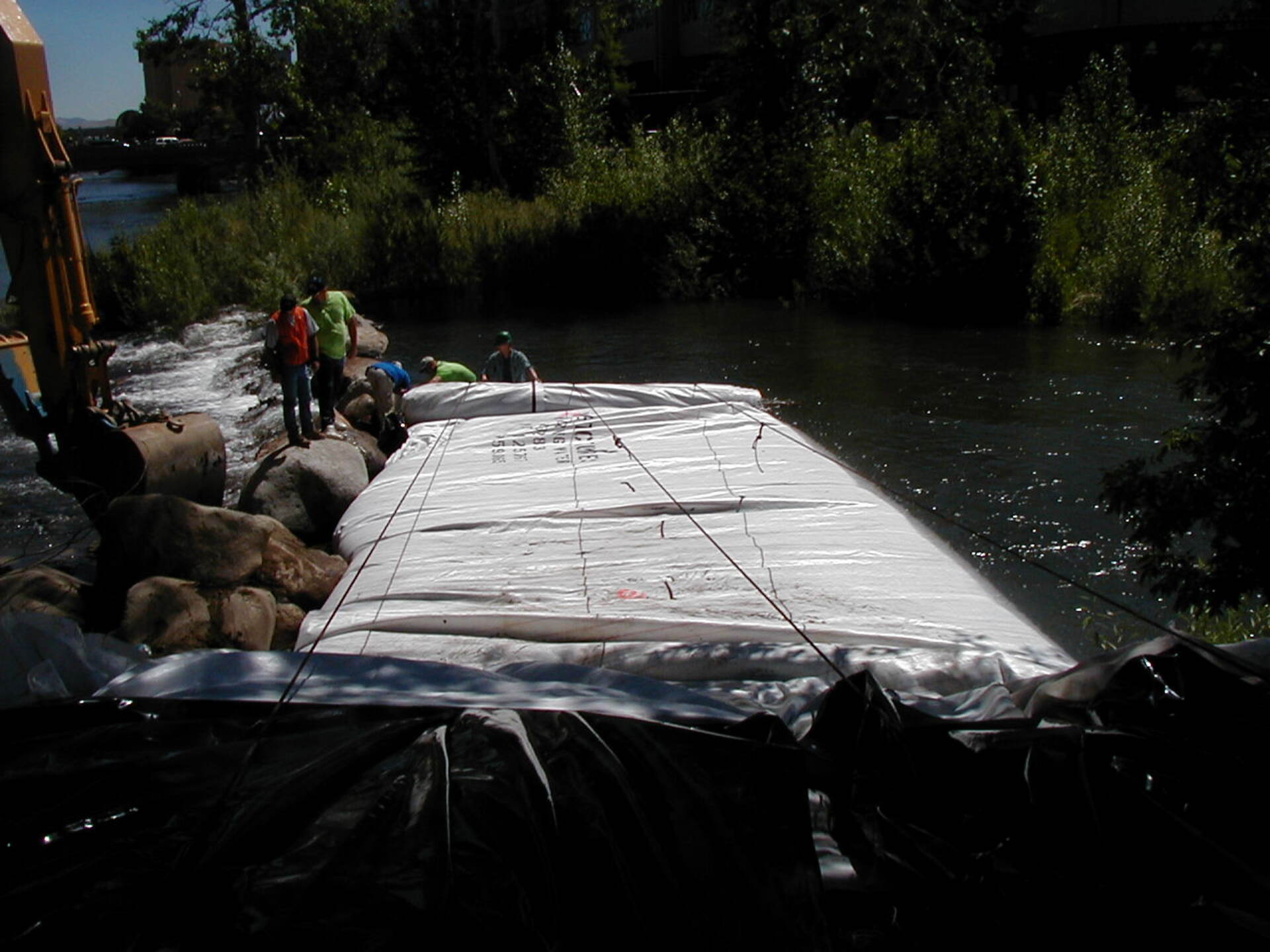
As the dam closes of the gap, of flowing water, the flow speeds up and the upstream water continues to rise in depth.

Workers have unrolled the AquaDam® to its closed end and ending bank, but the dam will need to finish being filled. Notice the water depth difference from right to left?
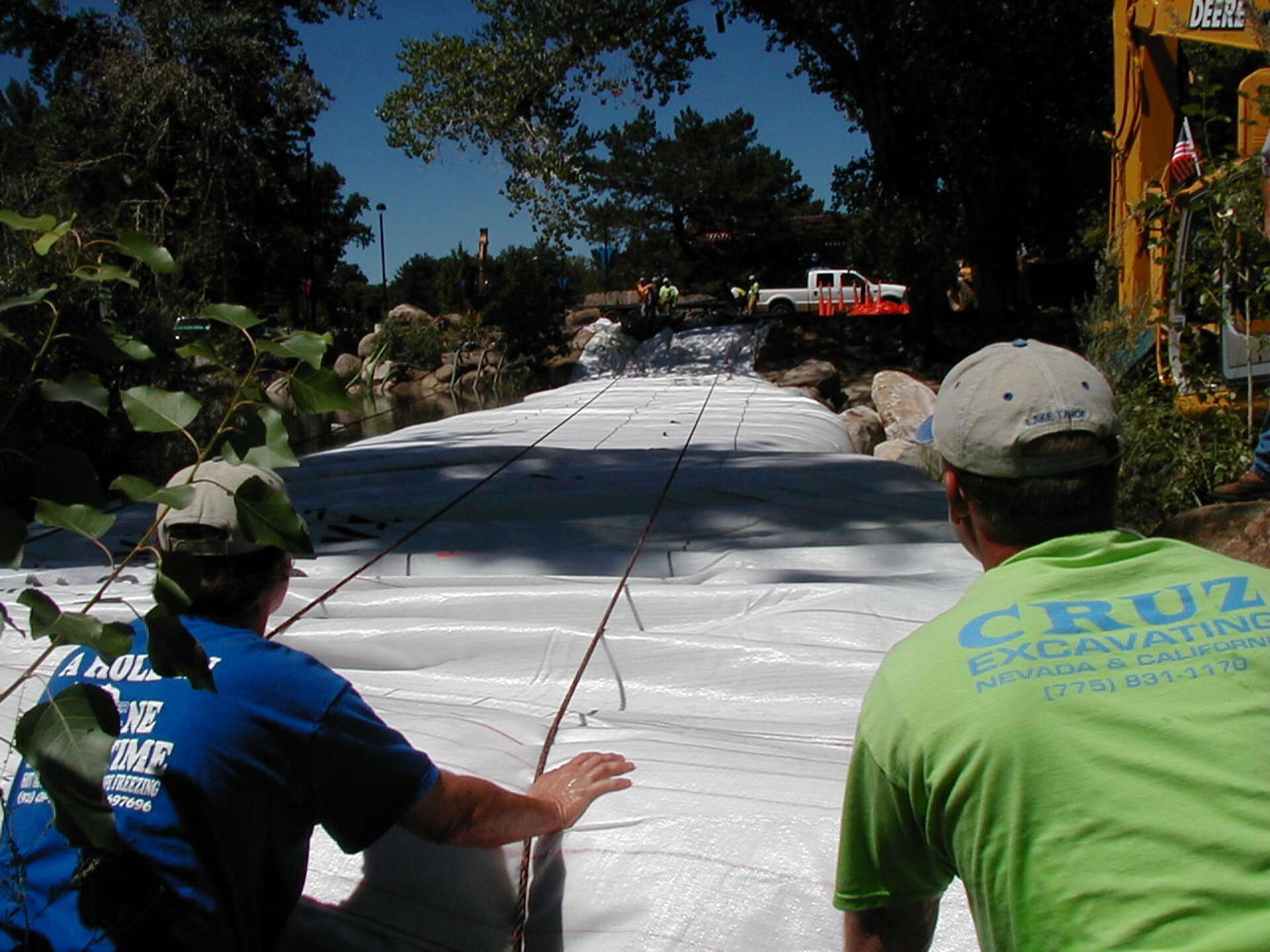
A photo from the ending bank, looking back at the starting bank, as the SCE AquaDam® continues to fill.
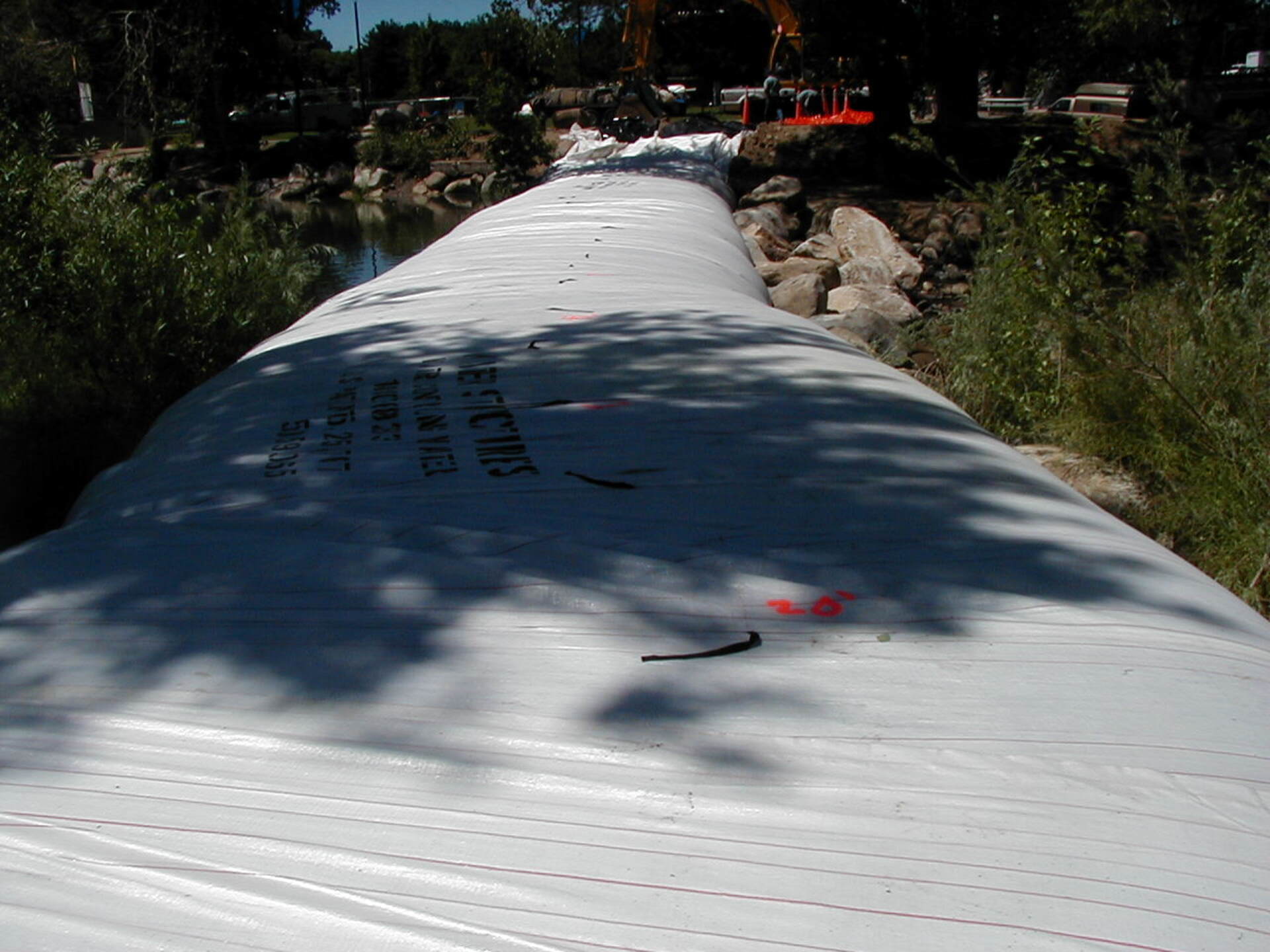
The first SCE AquaDam® is new pretty much full and diverting the downstream water.
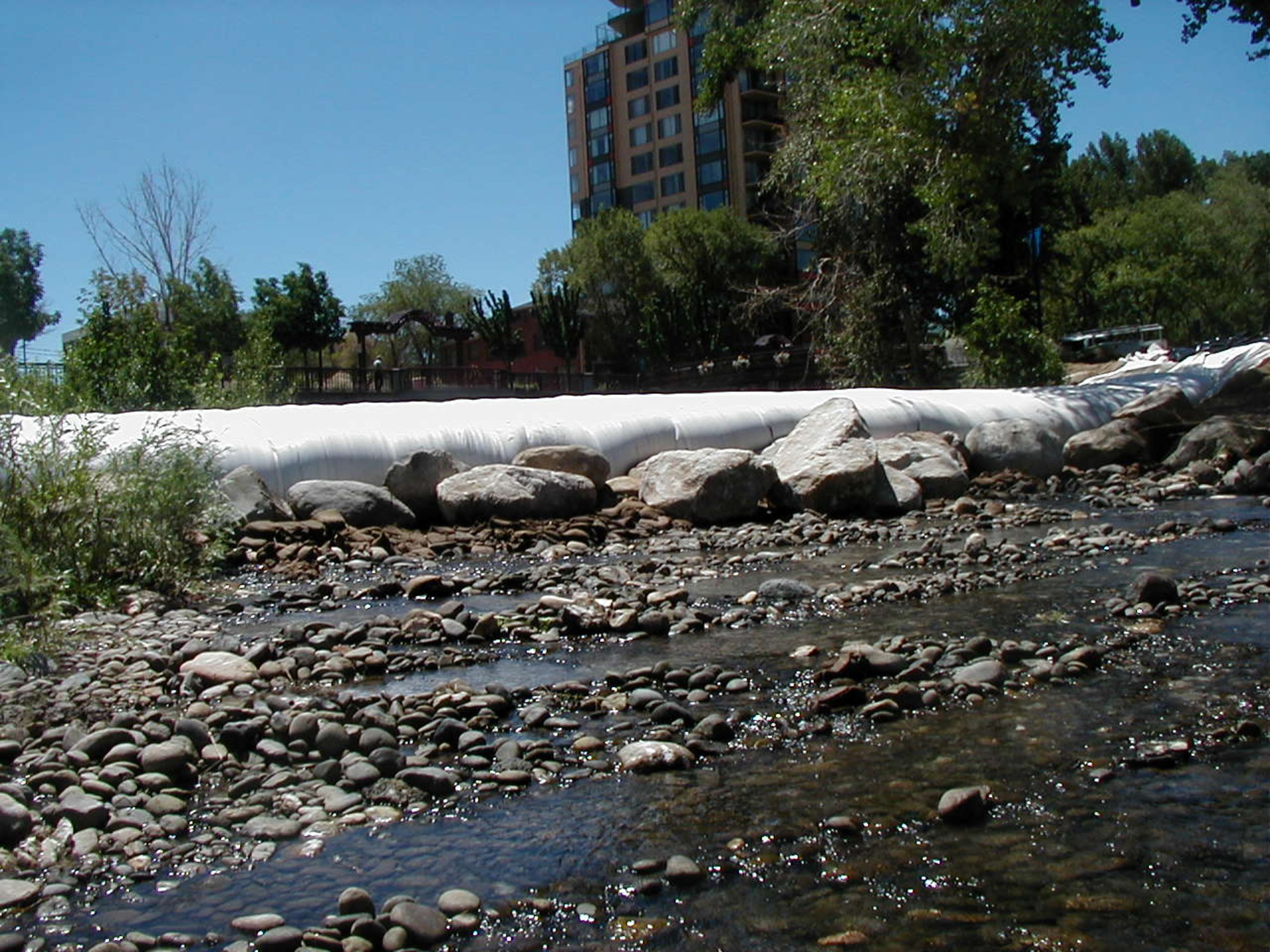
Looking up at the first SCE AquaDam® from downstream in the work area.
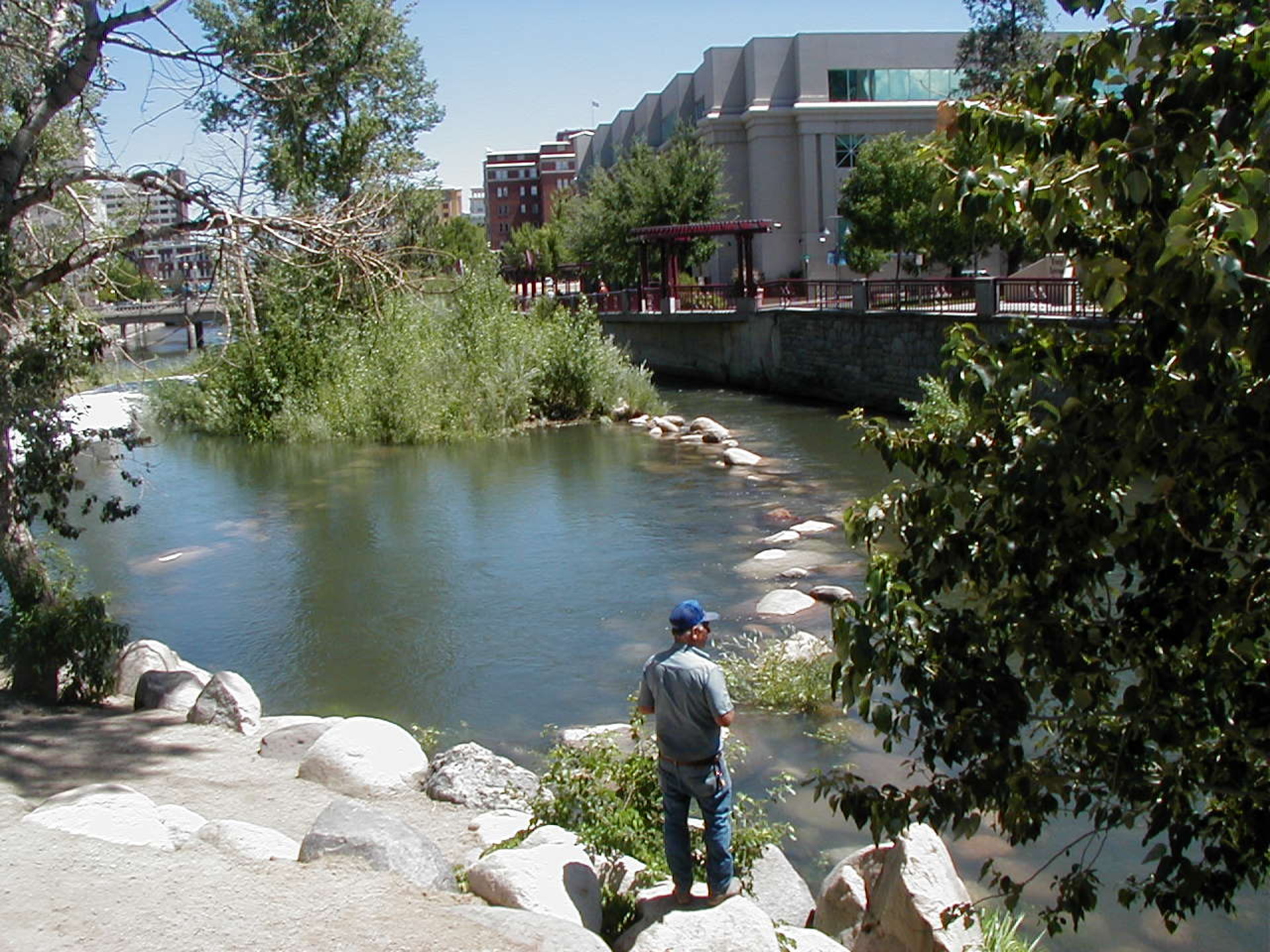
Looking downstream at the diverted flow. Can you tell that the water depth over here has risen?
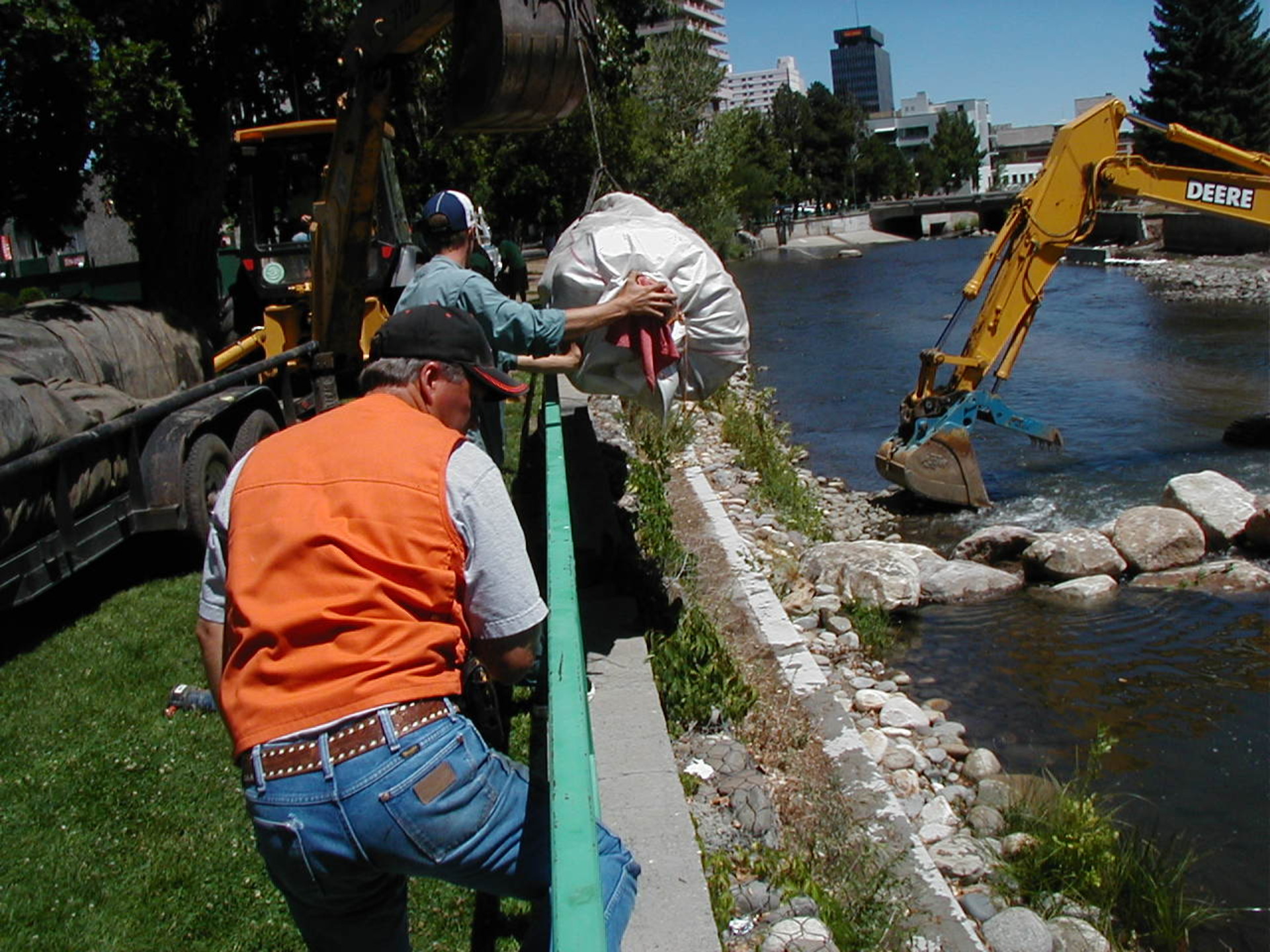
Time to install the second SCE AquaDam® at the upstream side of the work area. AquaDams are delivered in a rolled-up form, similar to a carpet roll on a wooden beam. They are wrapped in a protective covering and include lifting ropes or straps for easy transportation.

Worker begin the process of clearing the path of where this AquaDam® will go, just like the first installation.
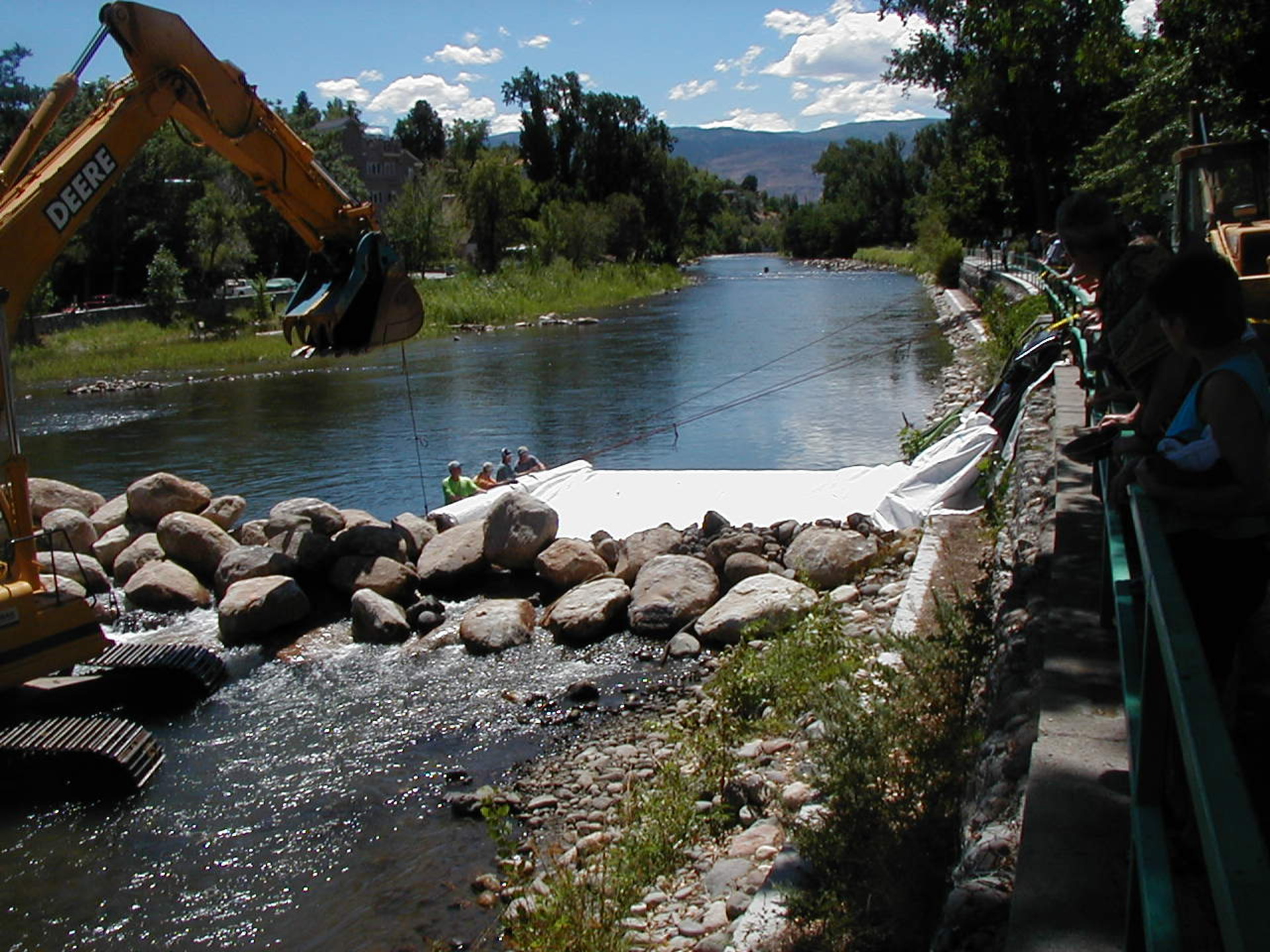
Just like the first SCE AquaDam, ropes were used by workers to control the dam as it was being filled with water. The excavator is assisting in lifting the beam over the boulders.
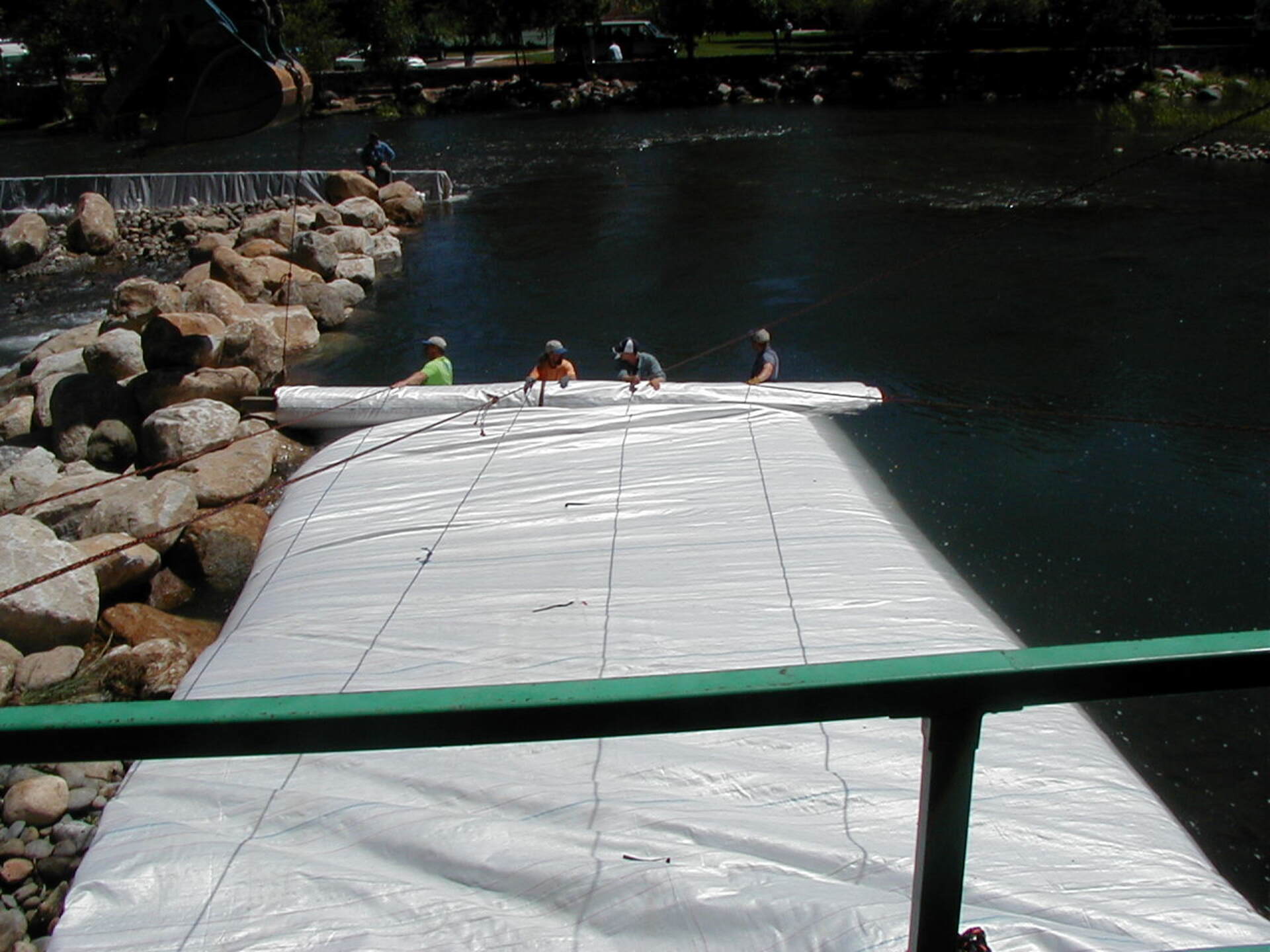
The second SCE AquaDam® continues to fill. This AquaDam® was larger than the first one, because it is diverting a greater amount of water.
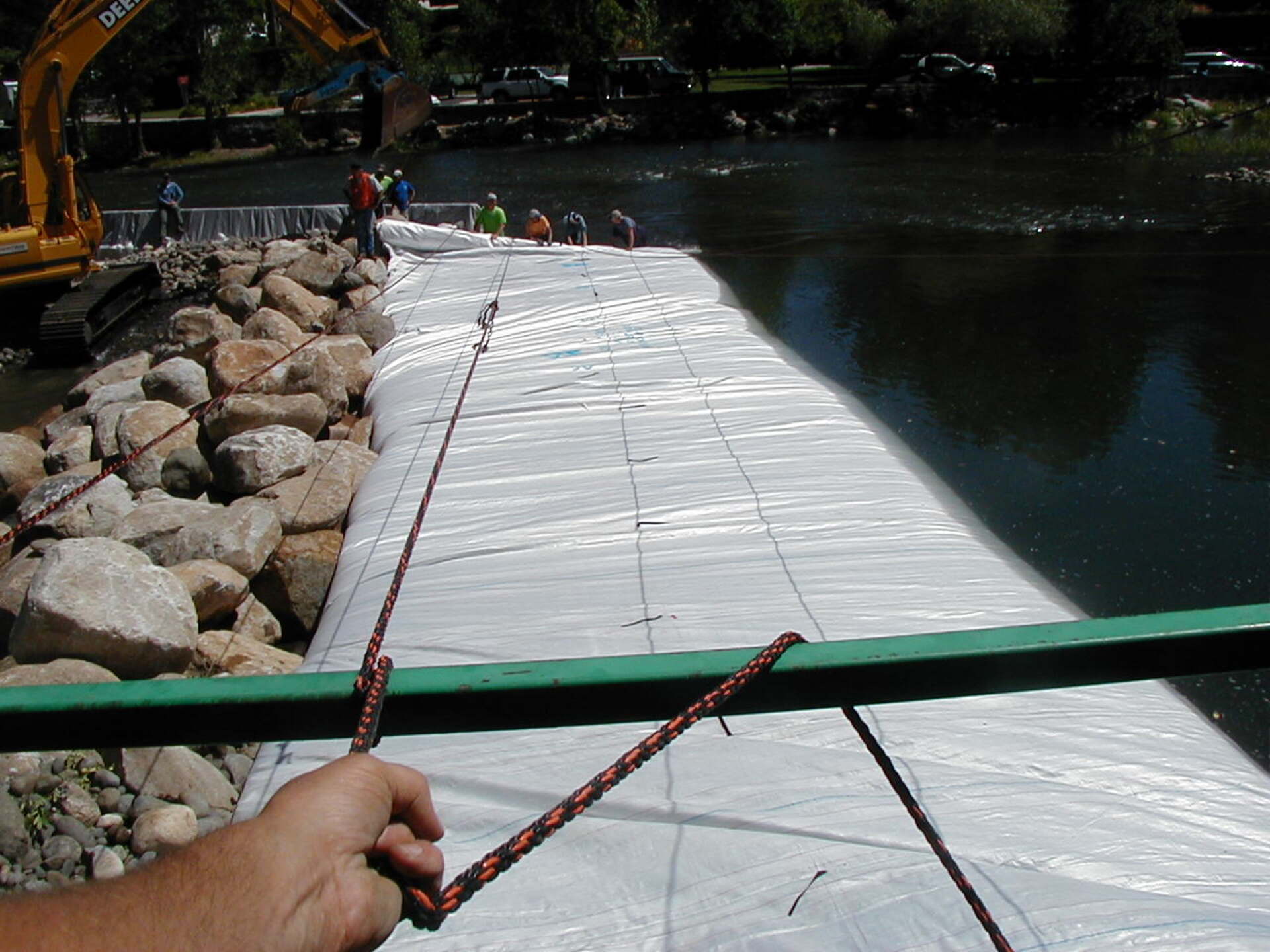
Workers keep tension in the ropes to allow the AquaDam® to build head. After the AquaDam® has enough head, workers release a few feet of rope, the dam unrolls, the head reduces to a few inches above the surrounding water, and worker hold the rope tight again until sufficient head has built again.
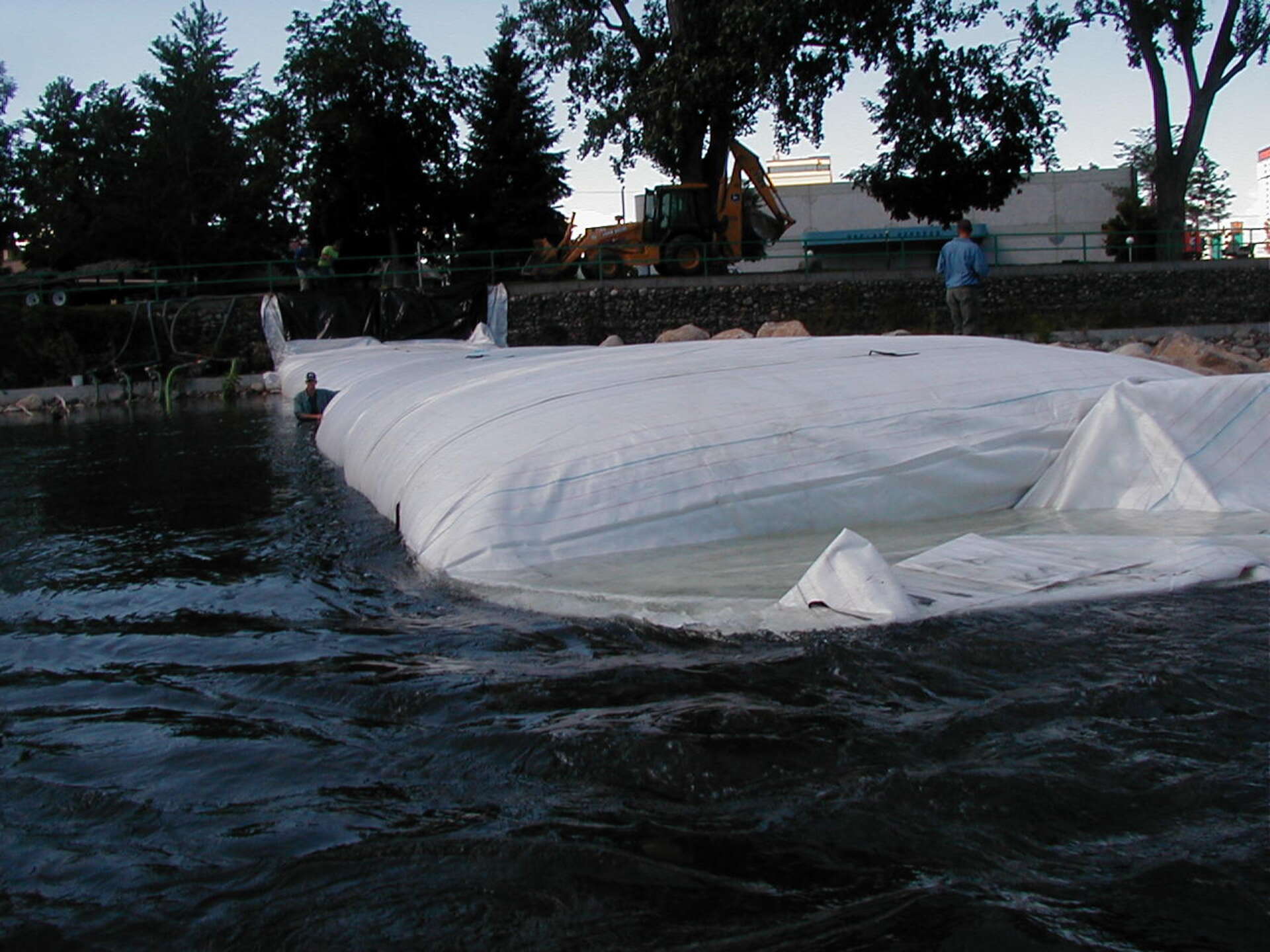
The second SCE AquaDam® has unrolled and now needs to finish filling with water. The working standing in the water is 6ft tall.
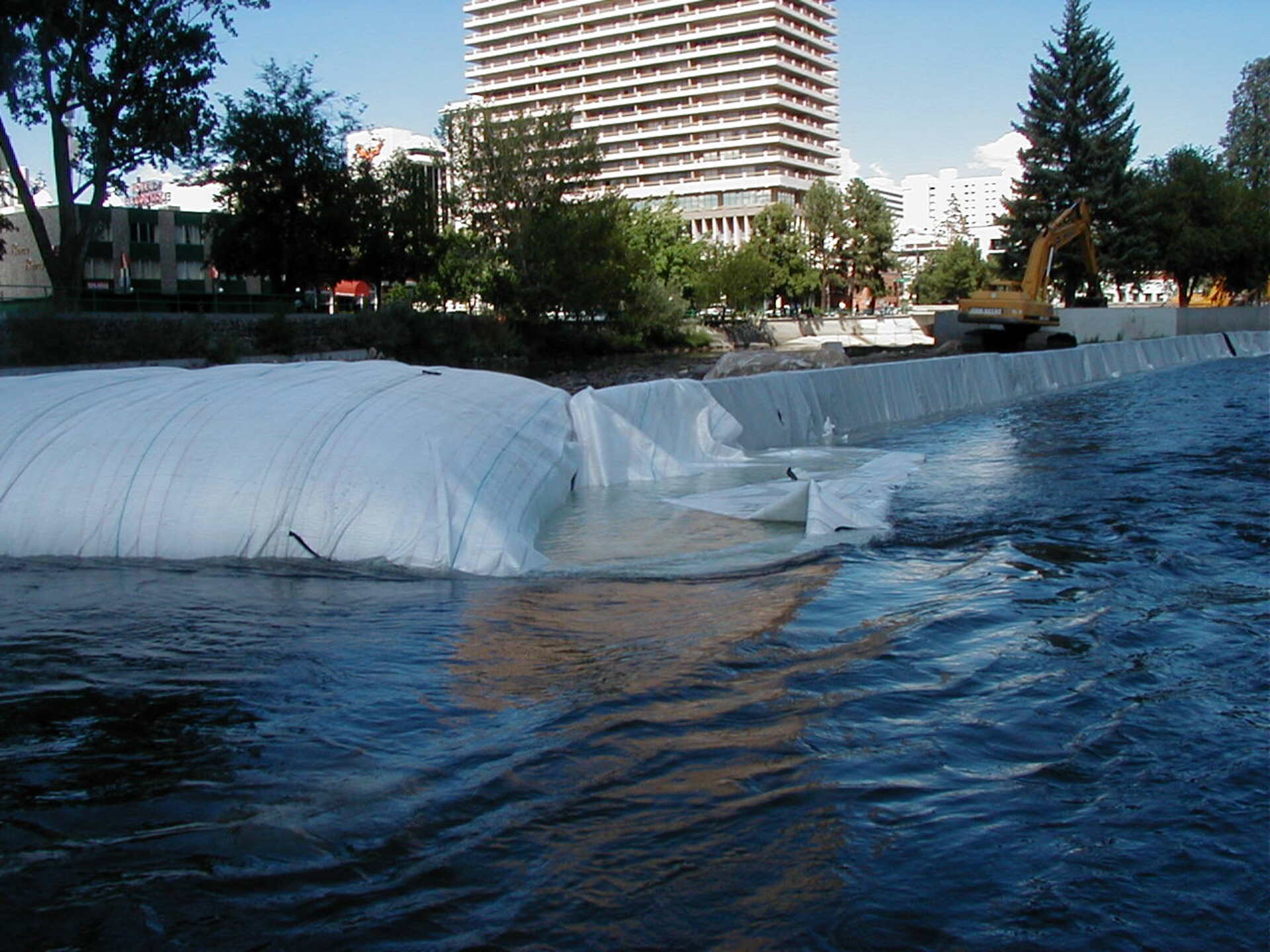
The closed end of the second SCE AquaDam® abutted to plastic wrapped K-rails. The additional material at the end of the AquaDam® is a connection collar that was not used for connecting but as a protection layer between the rails and the closed end of the dam.

Here is a better view of the plastic wrapped K-rails.
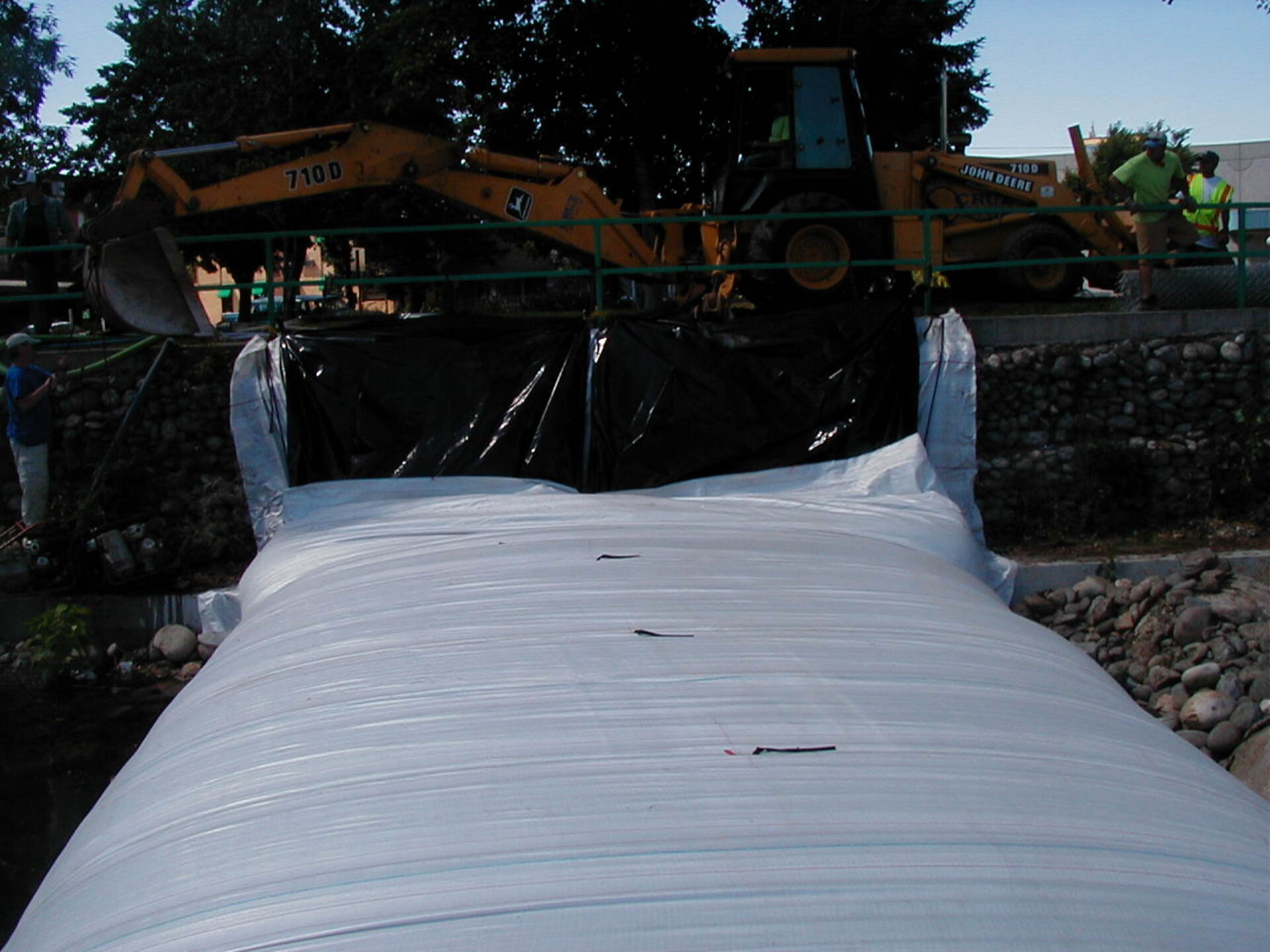
The starting bank for the second SCE AquaDam® was retaining wall. Dunnage material was laid between the AquaDam® and the wall to cover sharp edges.
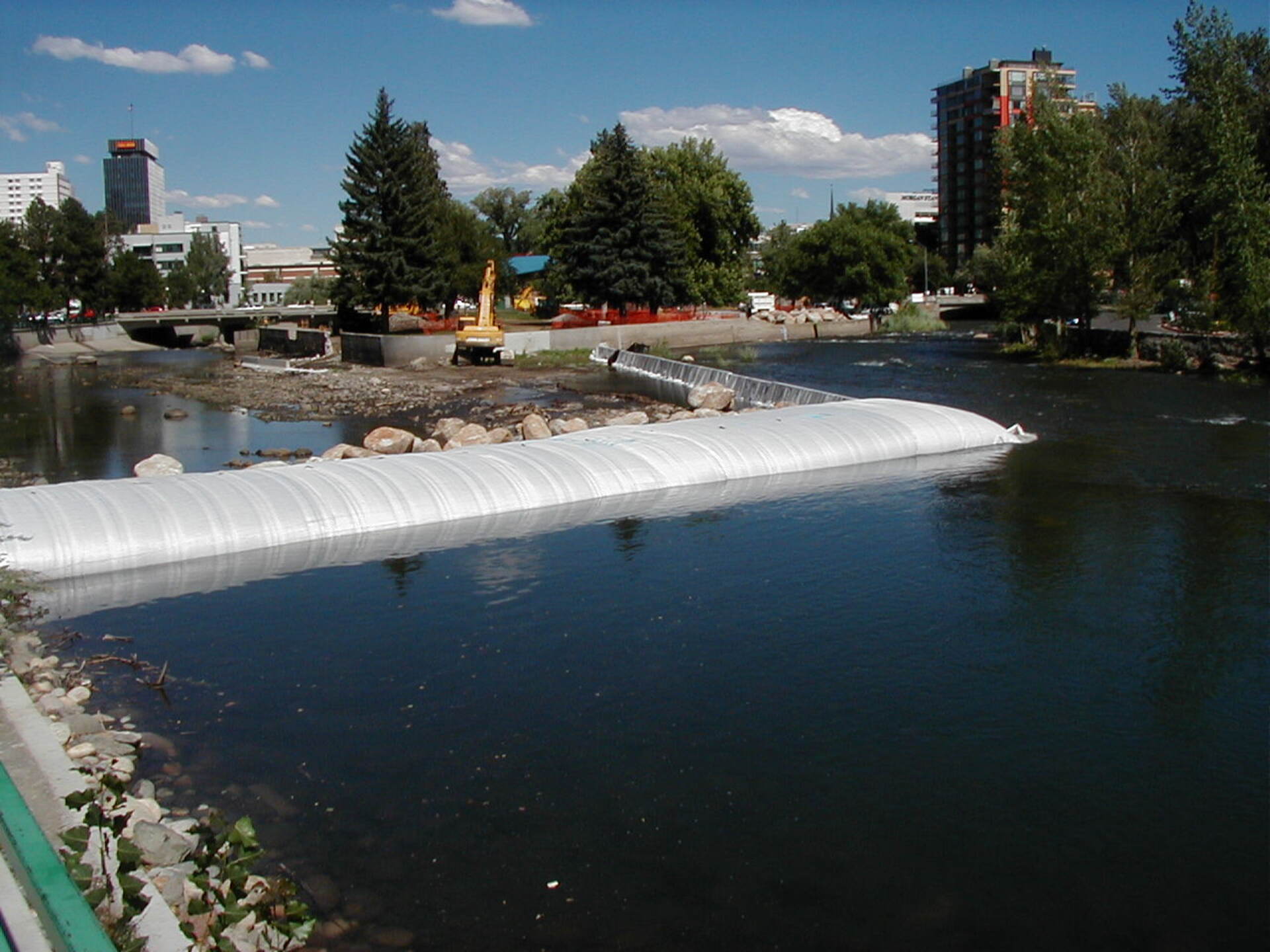
Looking downstream at the second SCE AquaDam, after it was installed and working. Can you tell the water depth difference?
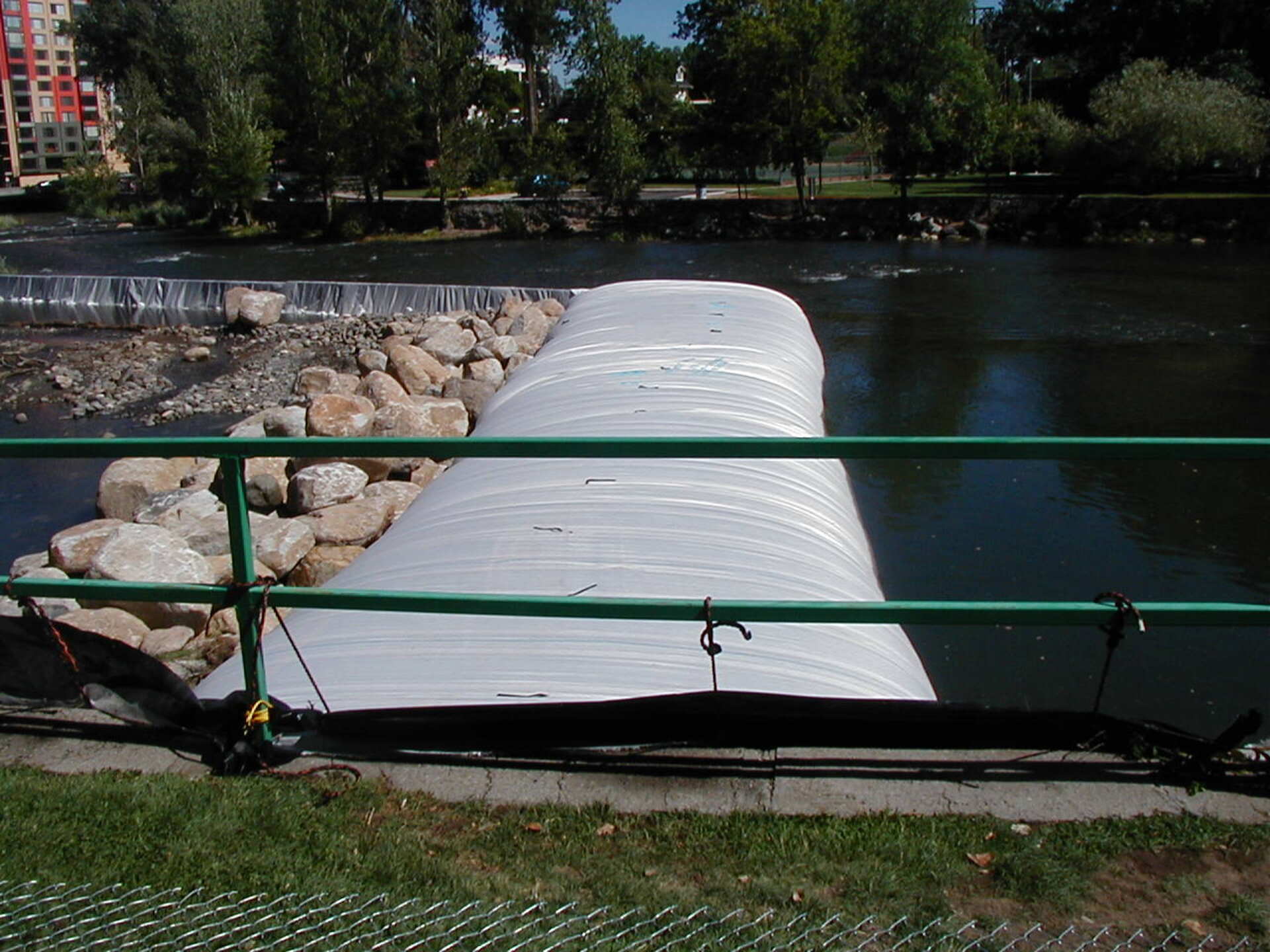
The ropes tied to the hand rail are fastened to the open end of the AquaDam® and are there to keep it in place.
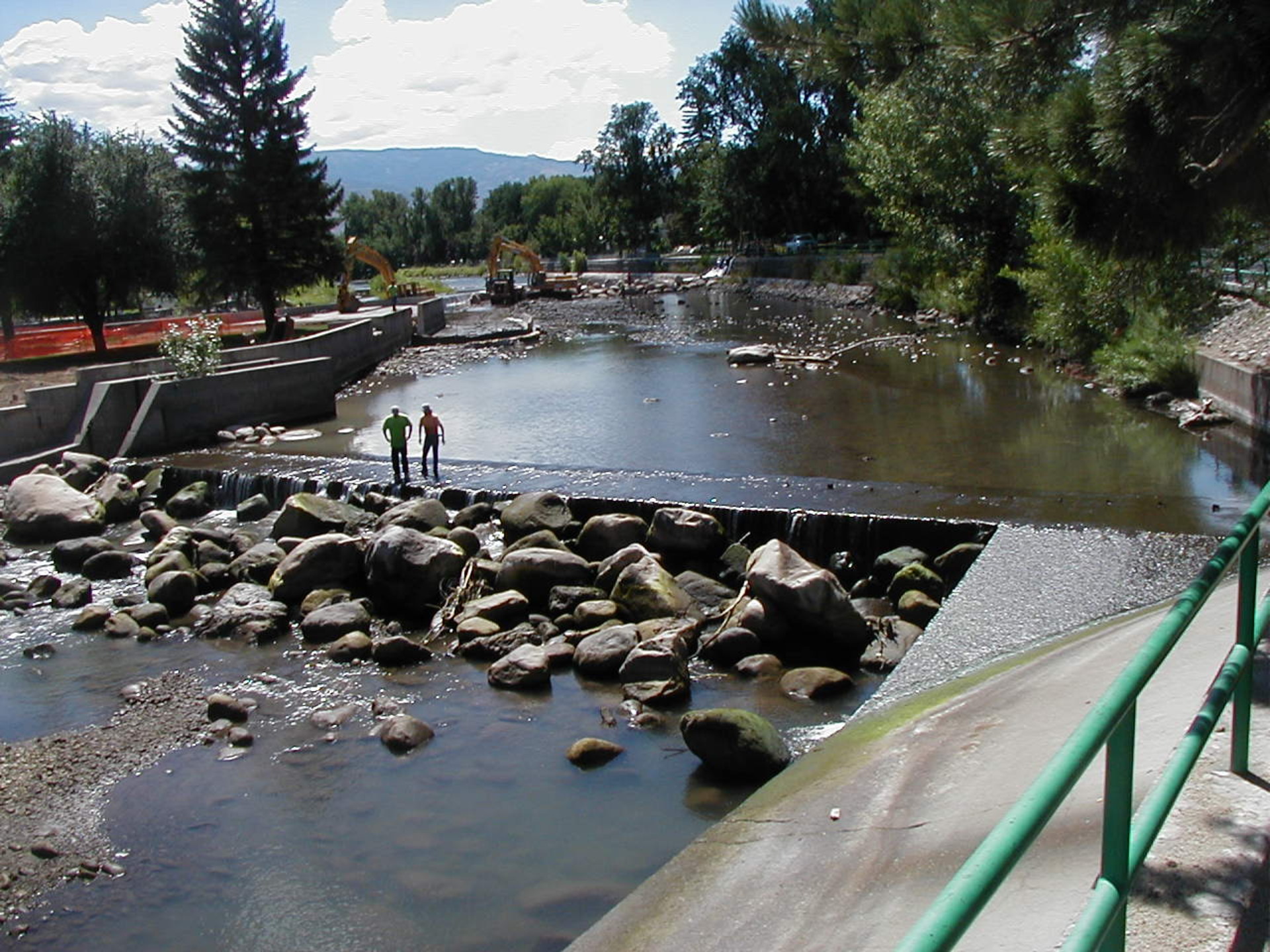
The work area after it has started de-watering. Workers can now get a better look at the riverbed.
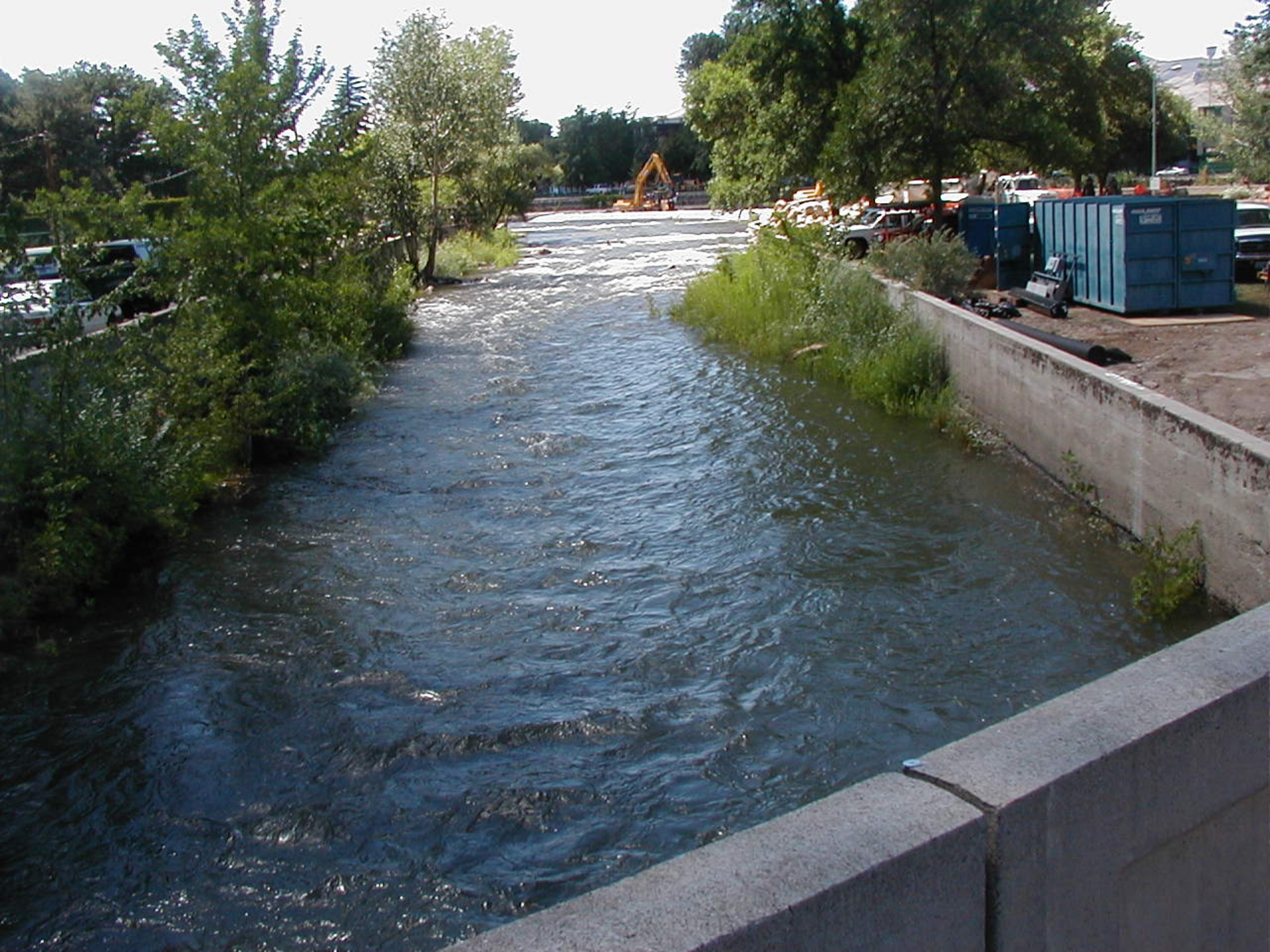
The diversion side of the river sure is flowing pretty good.
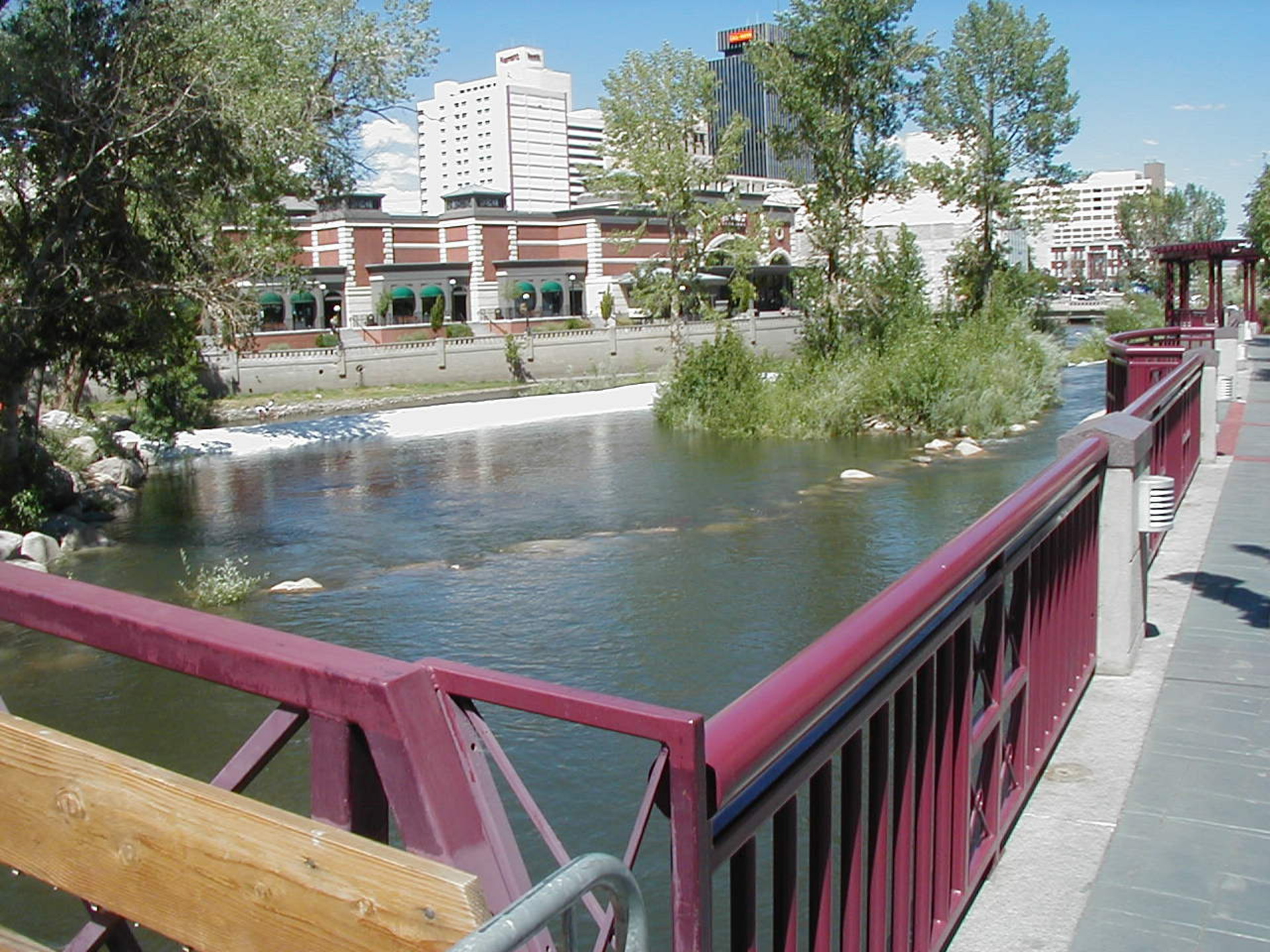
Looking downstream we can see the first SCE AquaDam® that was installed doing a great job. Those boulders were previously not submerged under water.
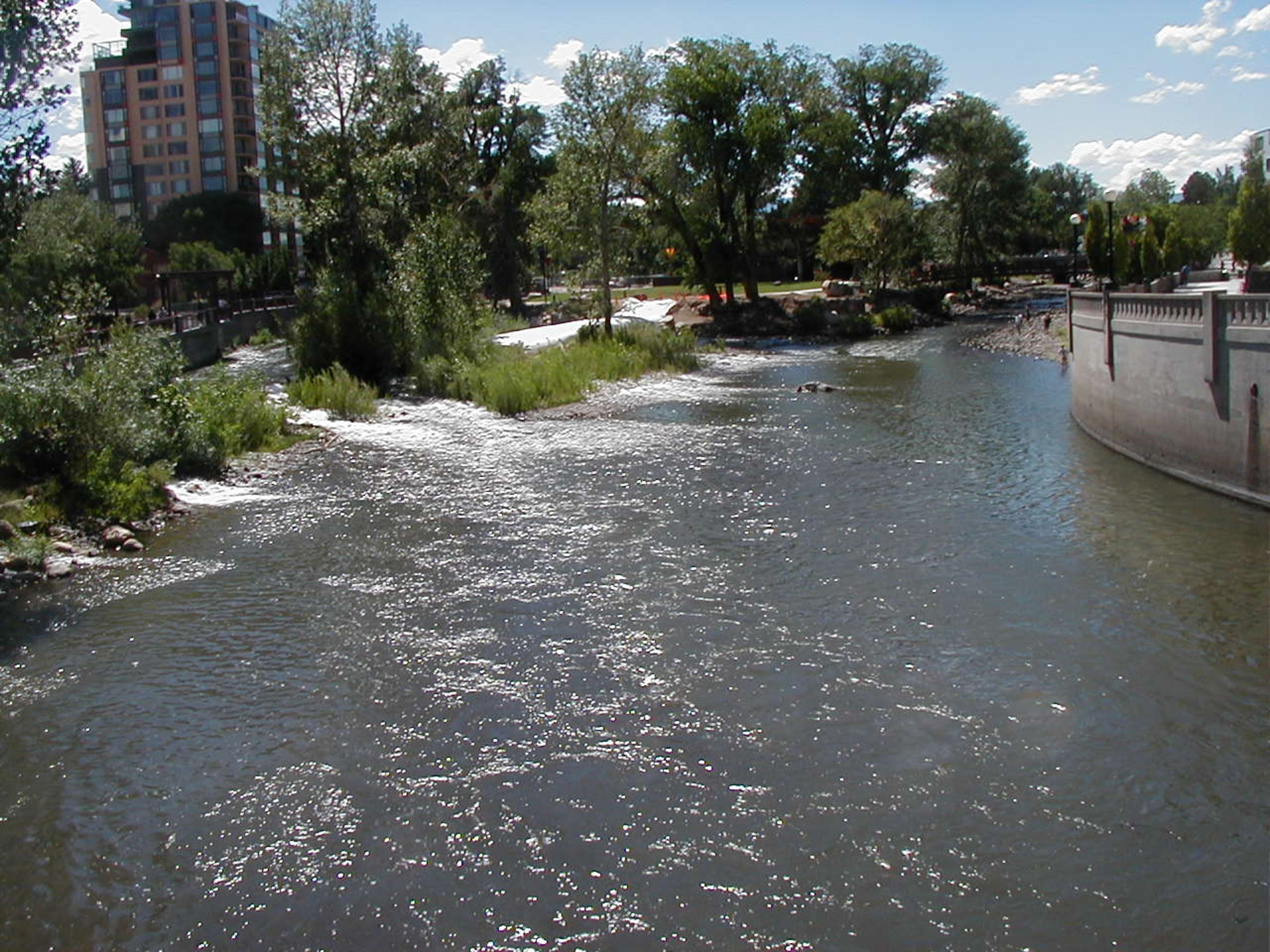
Looking upstream from downstream of the both AquaDams.
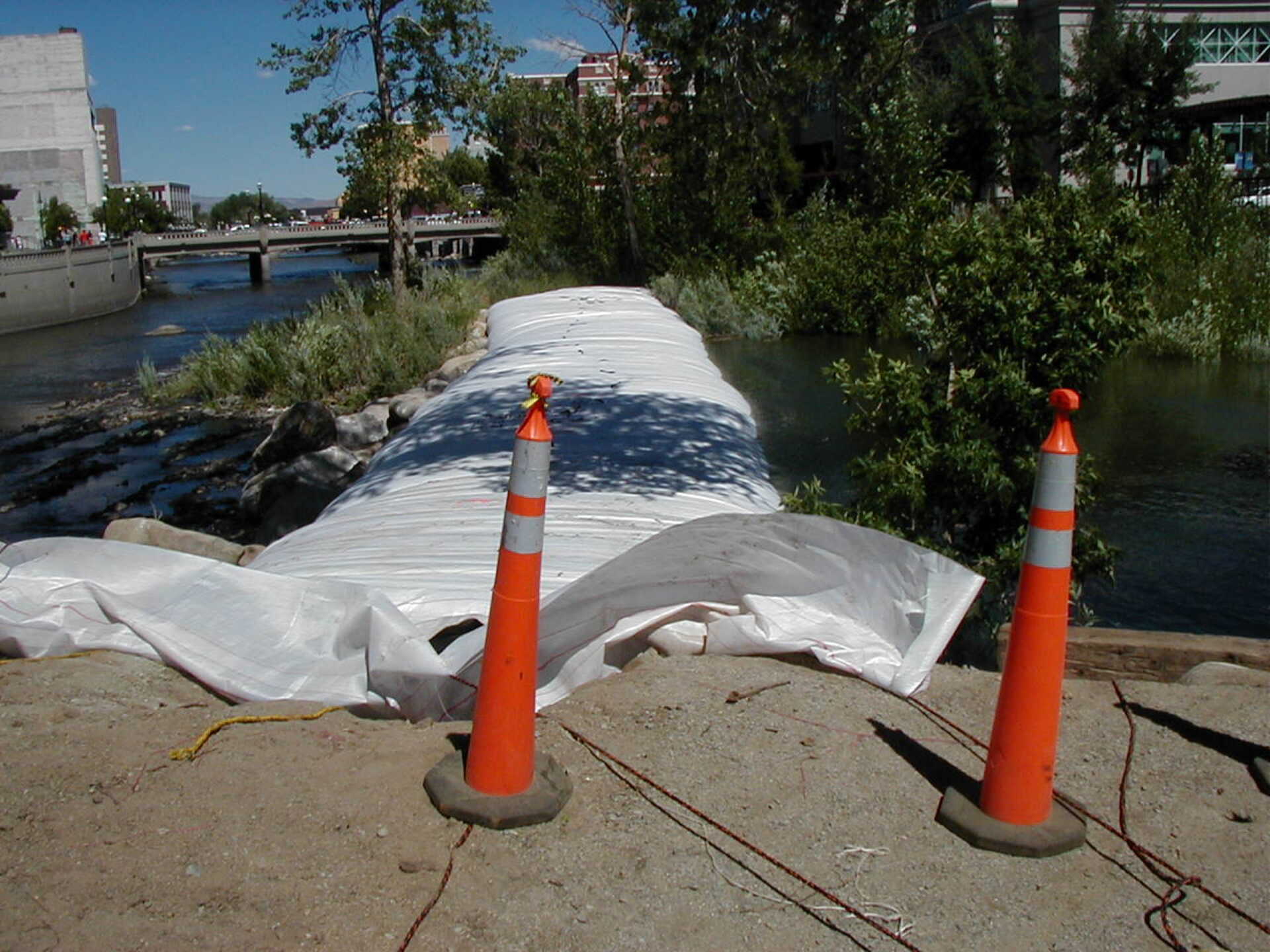
The first SCE AquaDam® is full, the fill-tubes have been closed up, and the open end is tied back to an anchor. This AquaDam® is holding back a large column of water for its size.
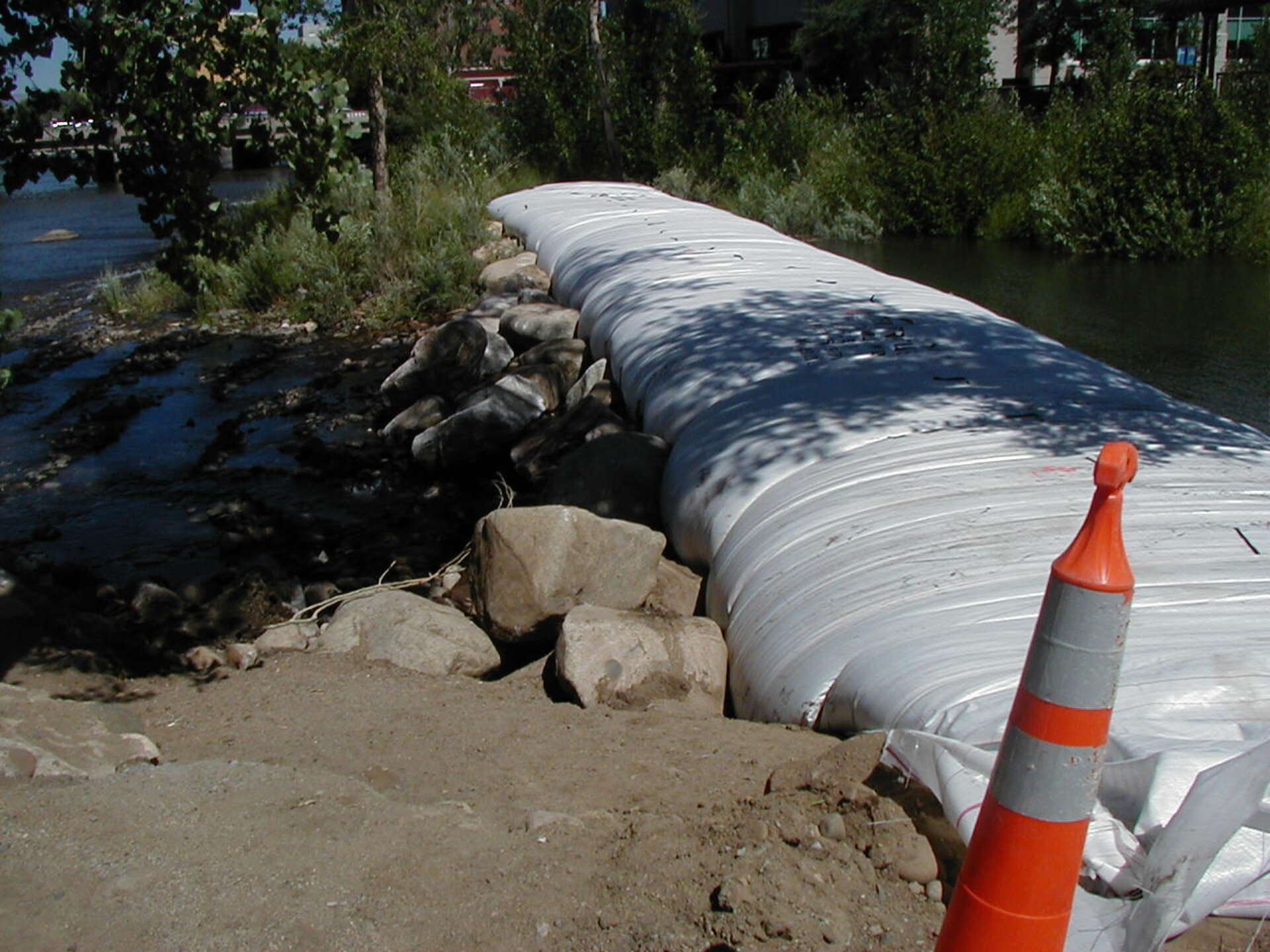
The downstream side of the first SCE AquaDam. Those boulders are doing a great job at supporting the AquaDam.
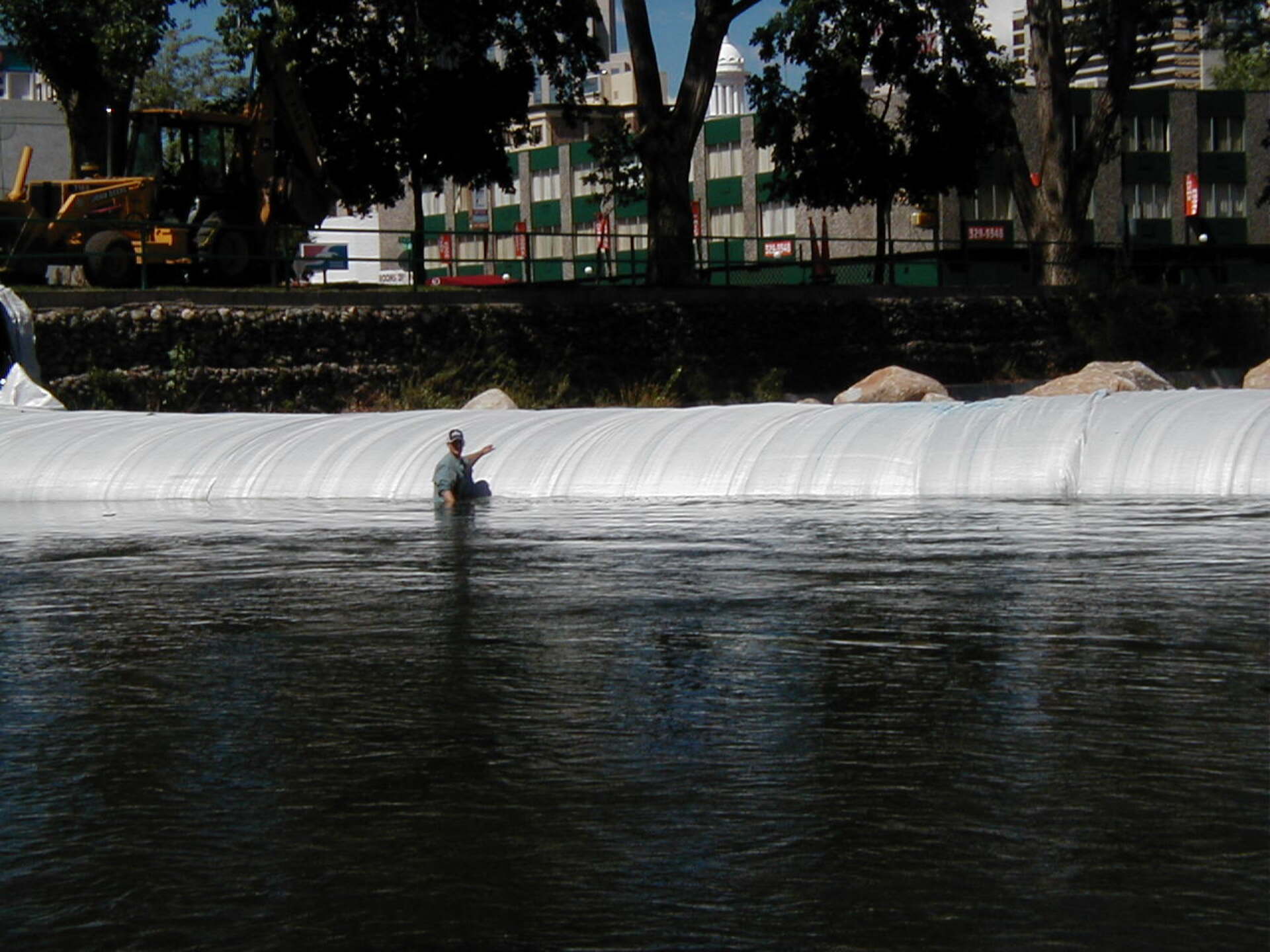
The second SCE AquaDam® is full. This 6ft tall worker is showing the depth of water and the height of the AquaDam.
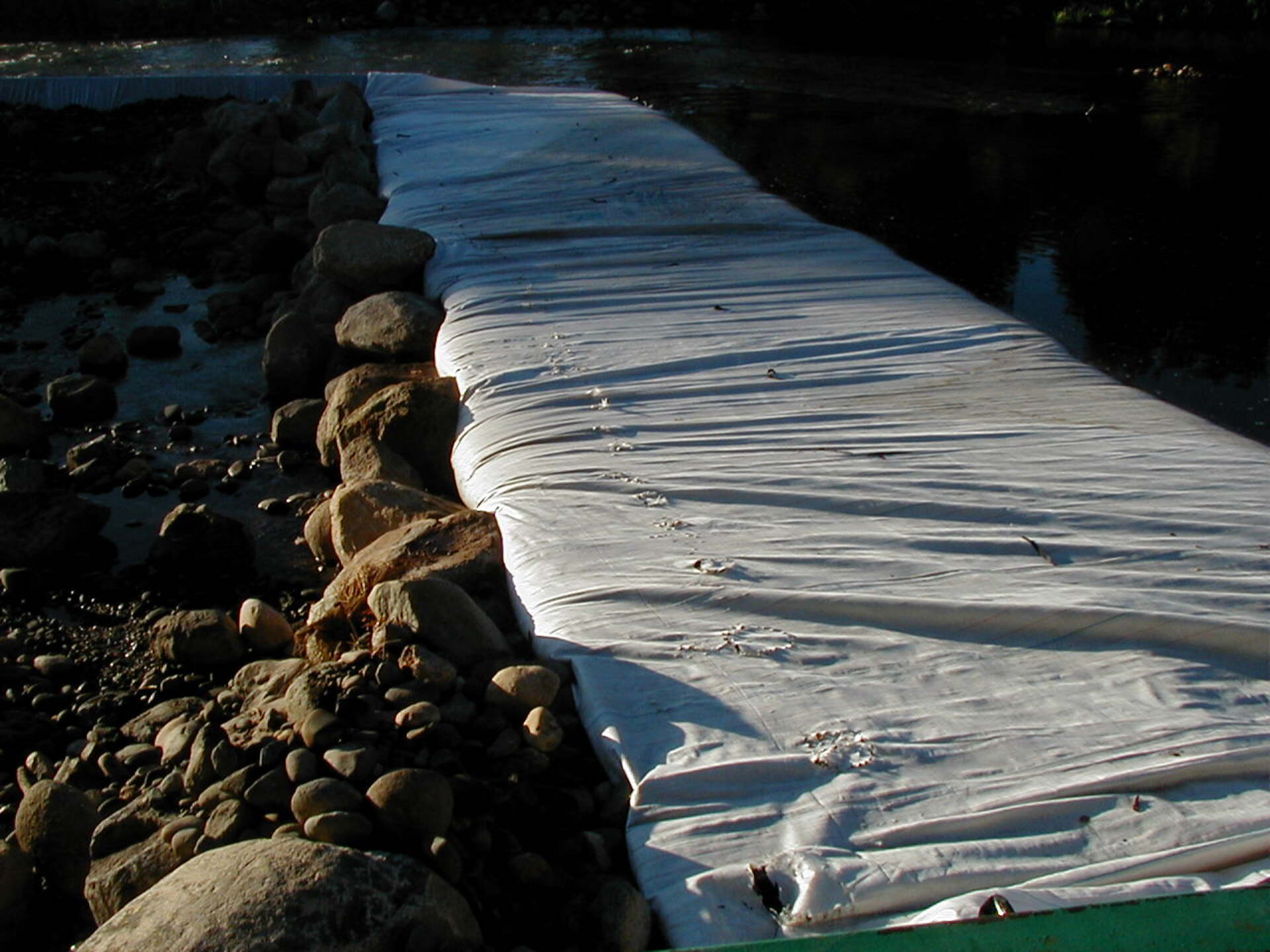
The second SCE AquaDam® was vandalized, resulting in damage. In order to maintain a de-watered work area while a new unit was being installed, the decision was made to install the new AquaDam® over the damaged one.
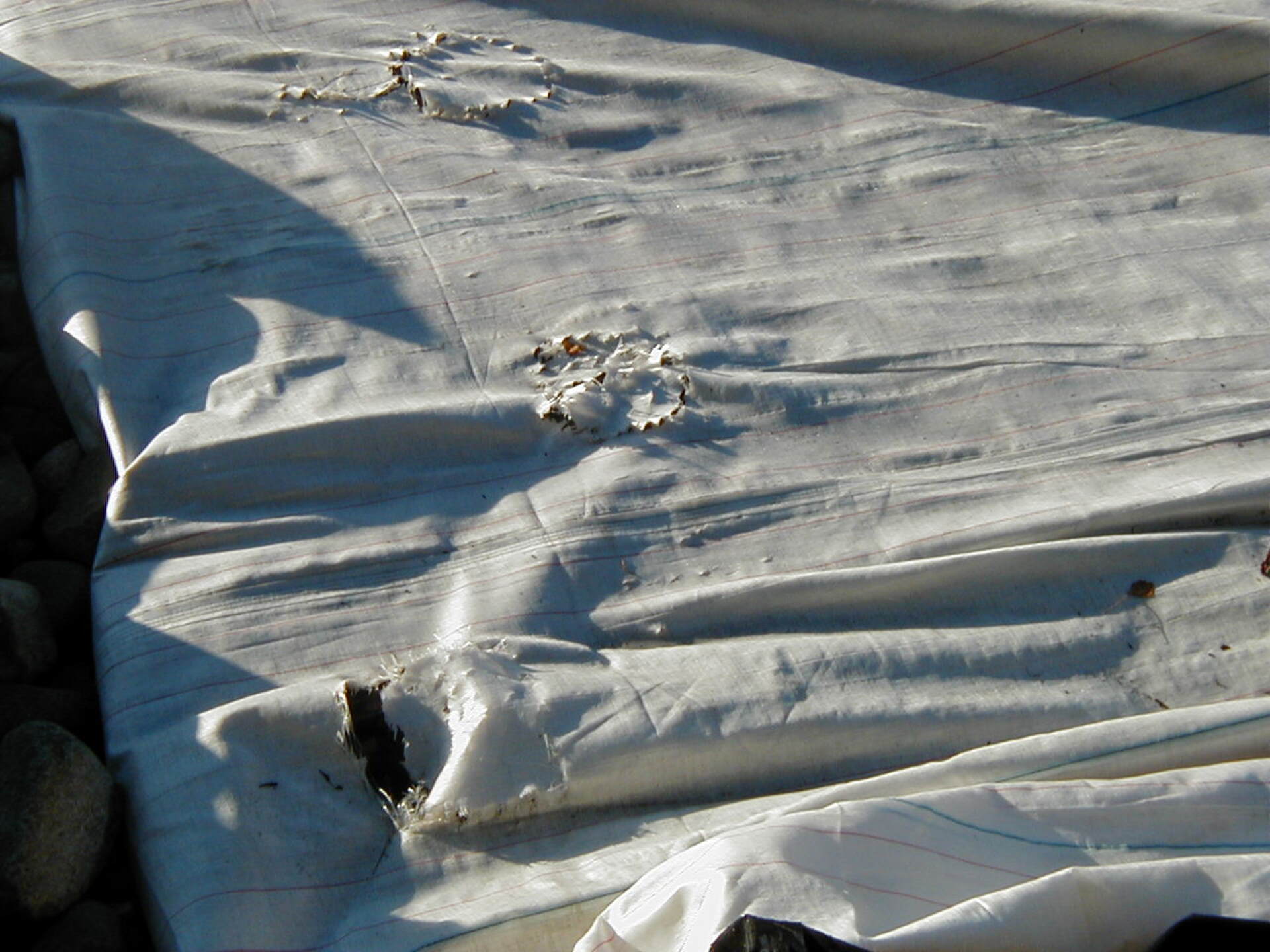
The origin of these holes remains a mystery, however, their unique pattern is unmistakable. Thankfully, the holes were located on the top of the AquaDam. If they had been on the side, the water would have leaked out before the new dam could be installed.

The contractor was able to call and arrange for Aqua Dam Inc. to deliver a new dam right away. A small hole was cut in the closed end of the damaged unit. The third SCE AquaDam® was started at the same starting bank, so as it was filled and unrolled it would force water out of the cut hole in the damaged dam.

Slow and steady is always the name of the game. Care was taken to ensure that the newly installed unit would fit in exactly the same place as the first so that the work area would remain de-watered.
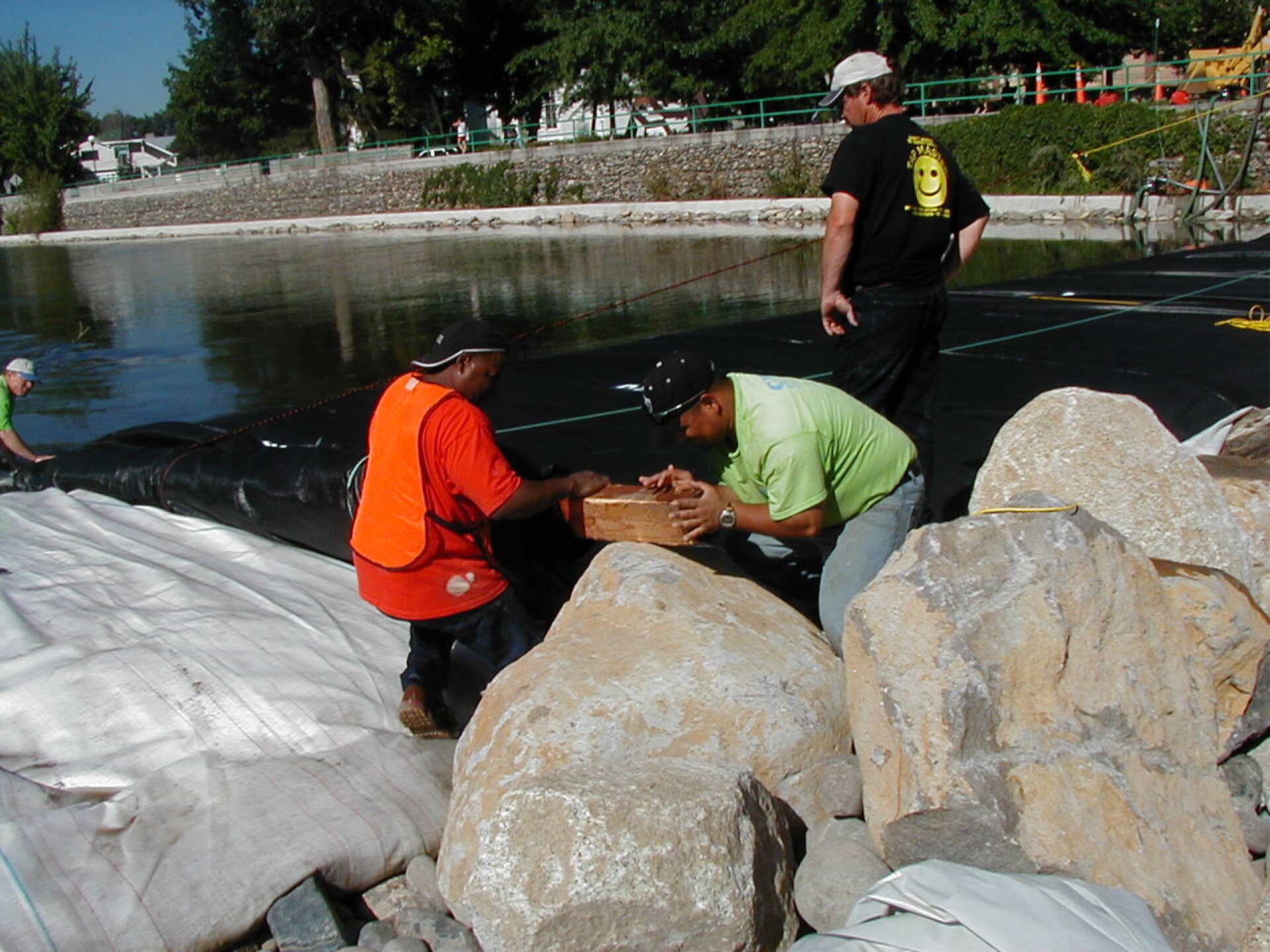
Due to the size of the boulders used to support the AquaDam, it was a bit of a challenge to get the beam over the top of them.
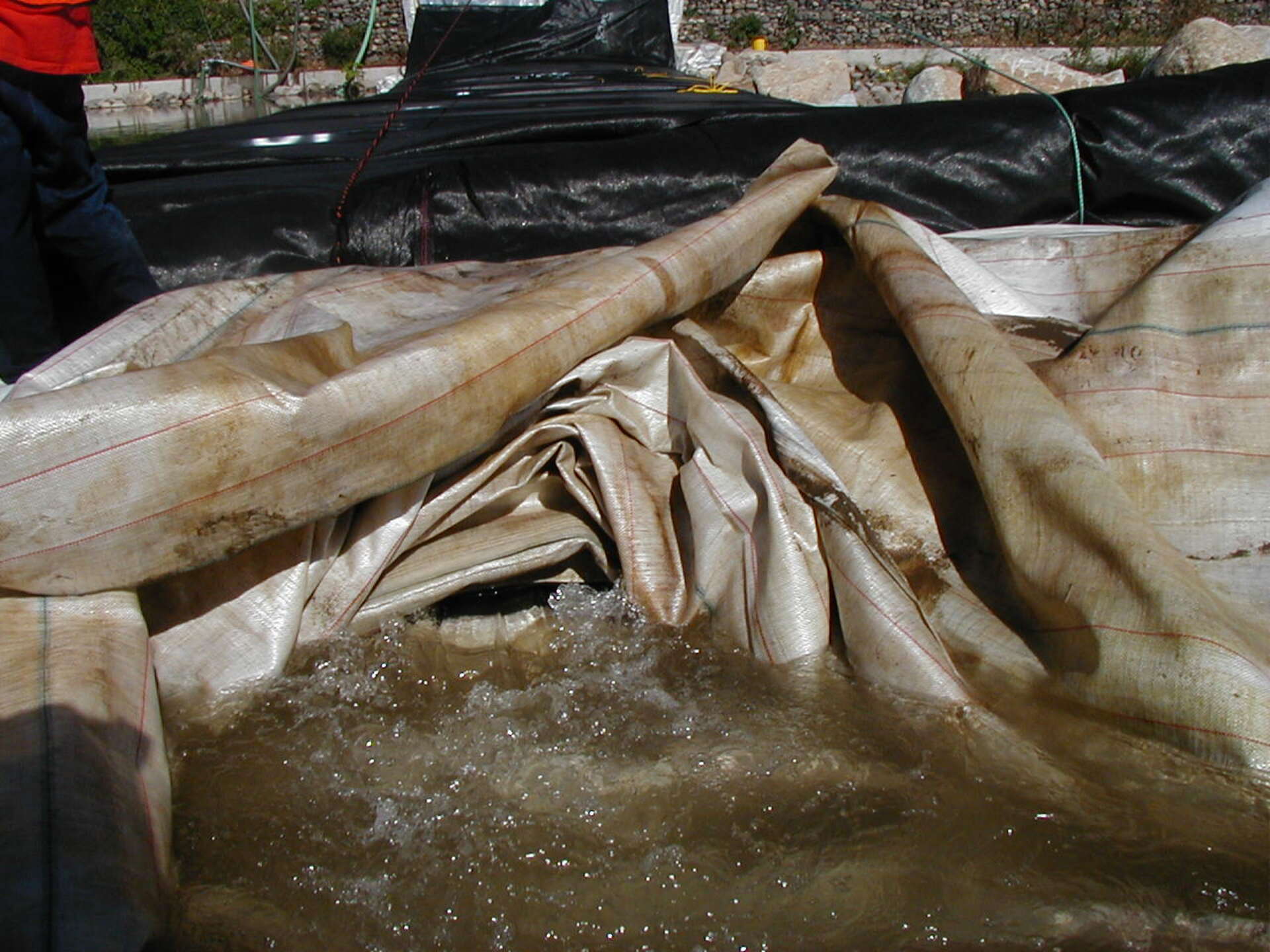
A view of the hole that was cut in the closed end of the damaged AquaDam® to help drain the water out.
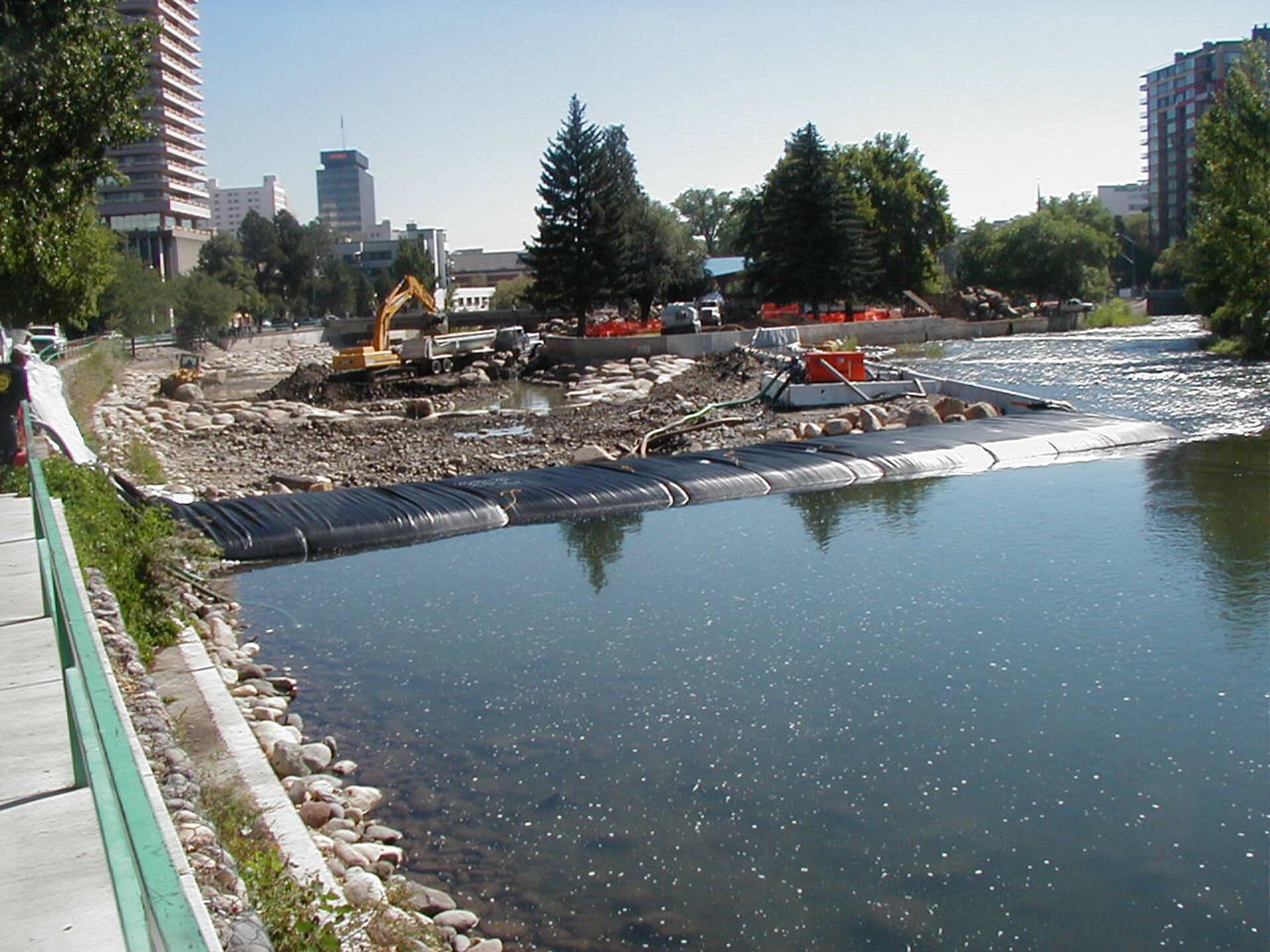
An upstream view of the third SCE AquaDam® after it was fully installed. When the project was completed, both of these dams were removed together.
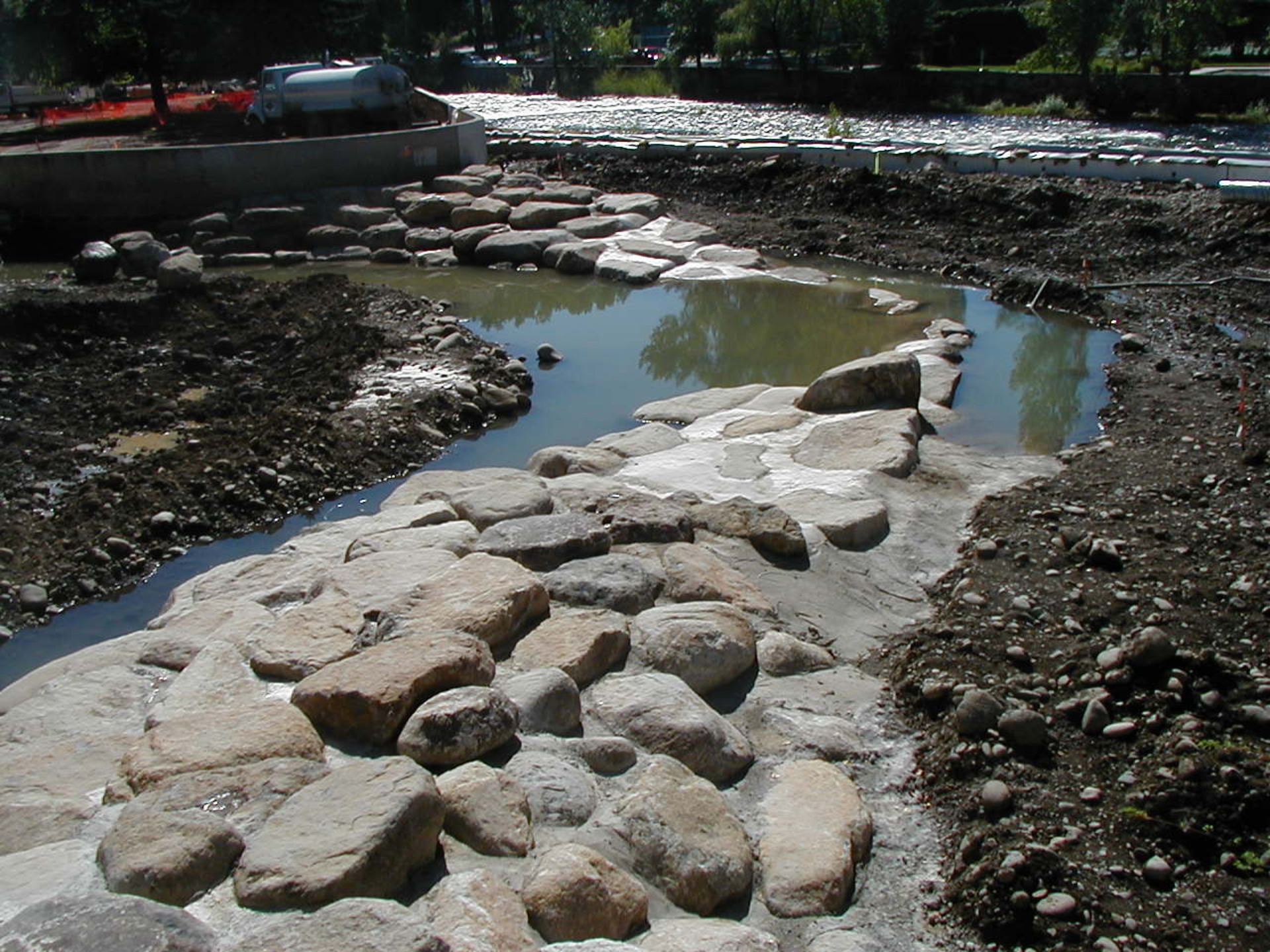
A photo taken from inside the work area. The purpose of the project was to create white water action for use as a kayak park.
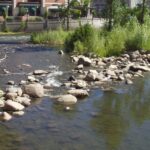
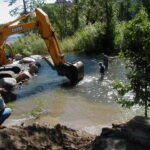
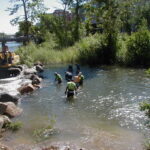

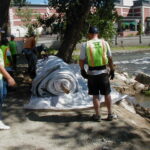
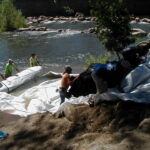
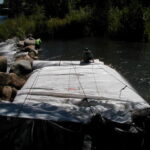
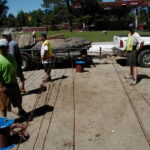
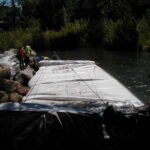

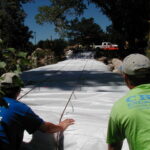
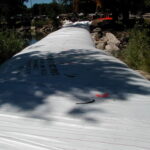
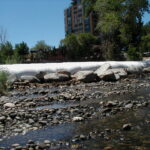
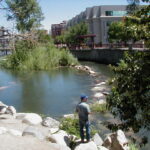

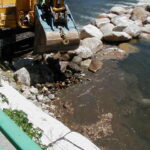
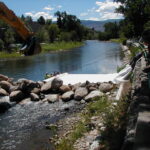
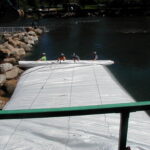
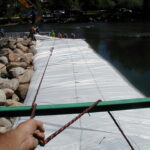
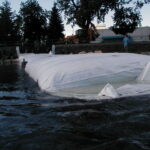
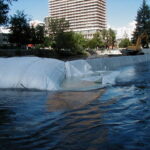
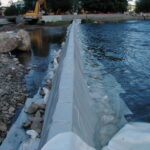
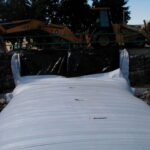
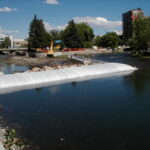
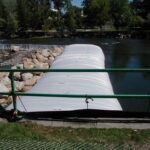

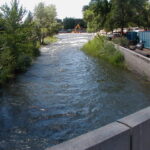
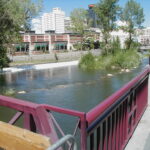
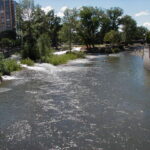
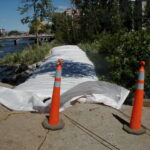
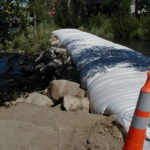
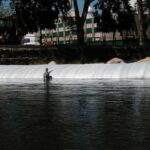
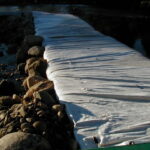
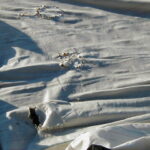
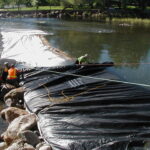
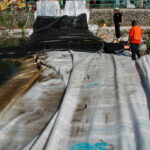
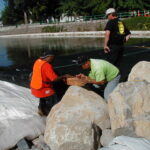
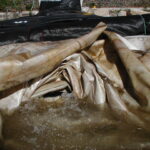
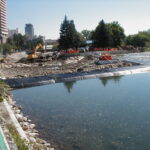

Three Single Closed End (SCE) AquaDam, Truckee River, River Diversion, Line Configuration, Vandalism Repairs, Wingfield Park
